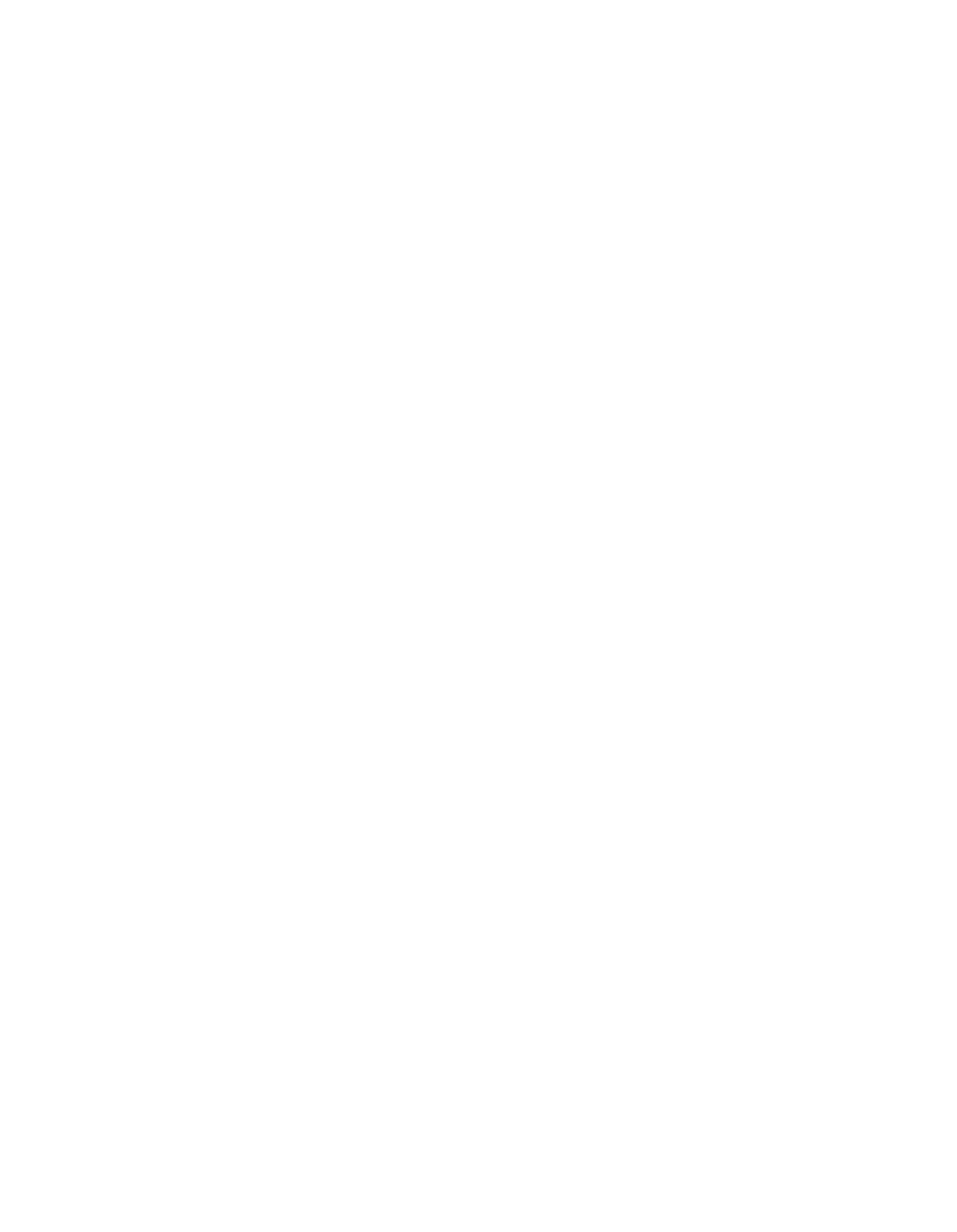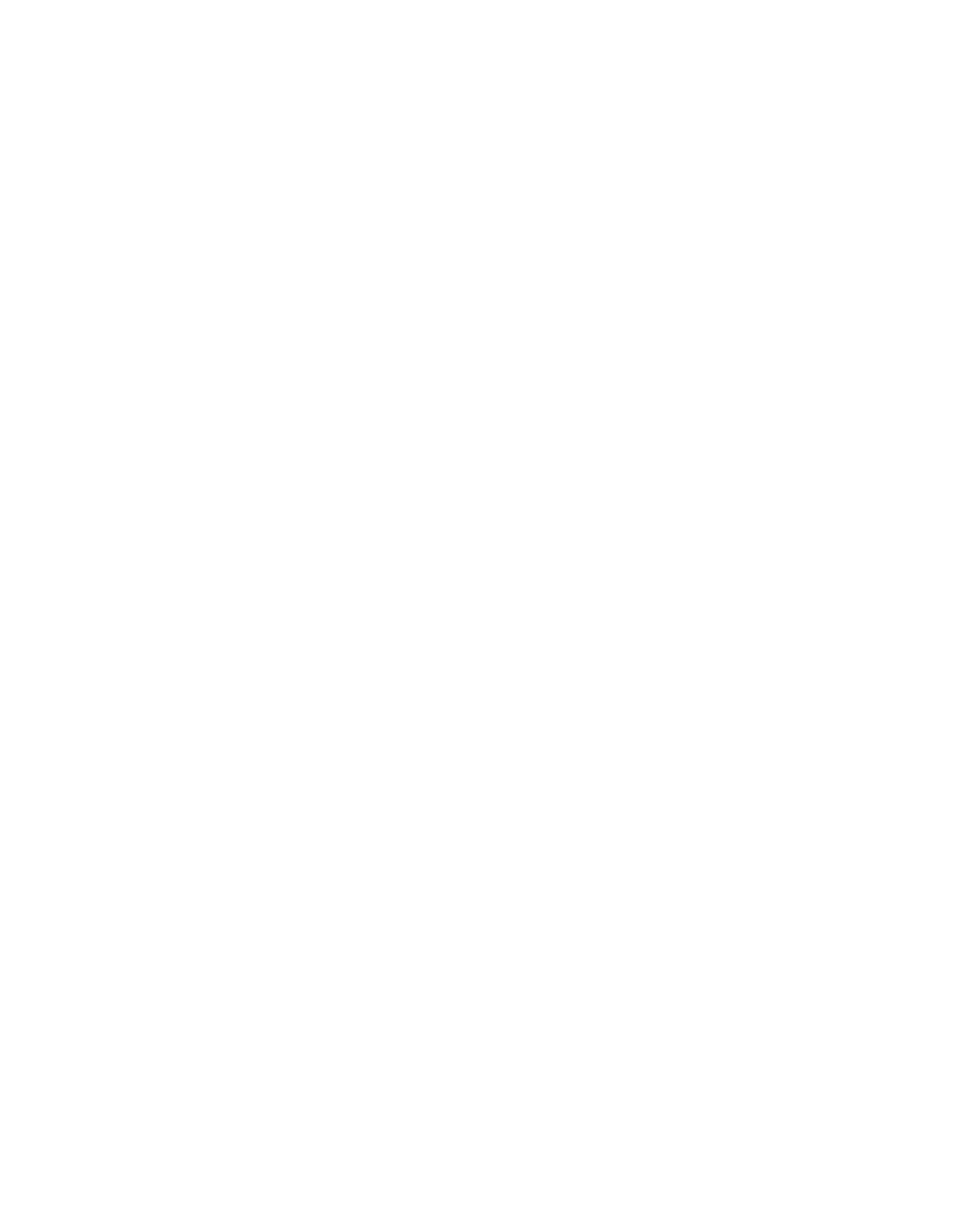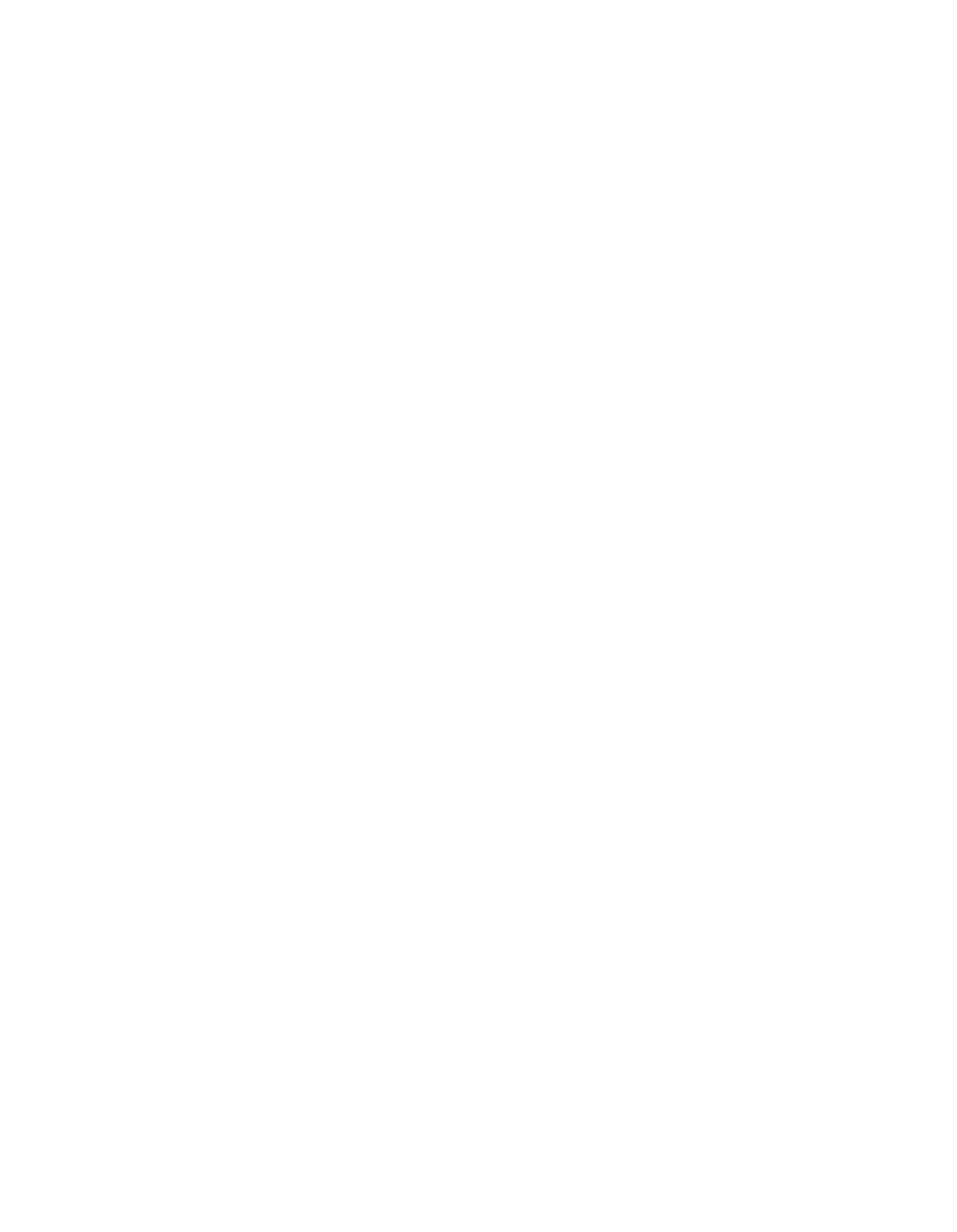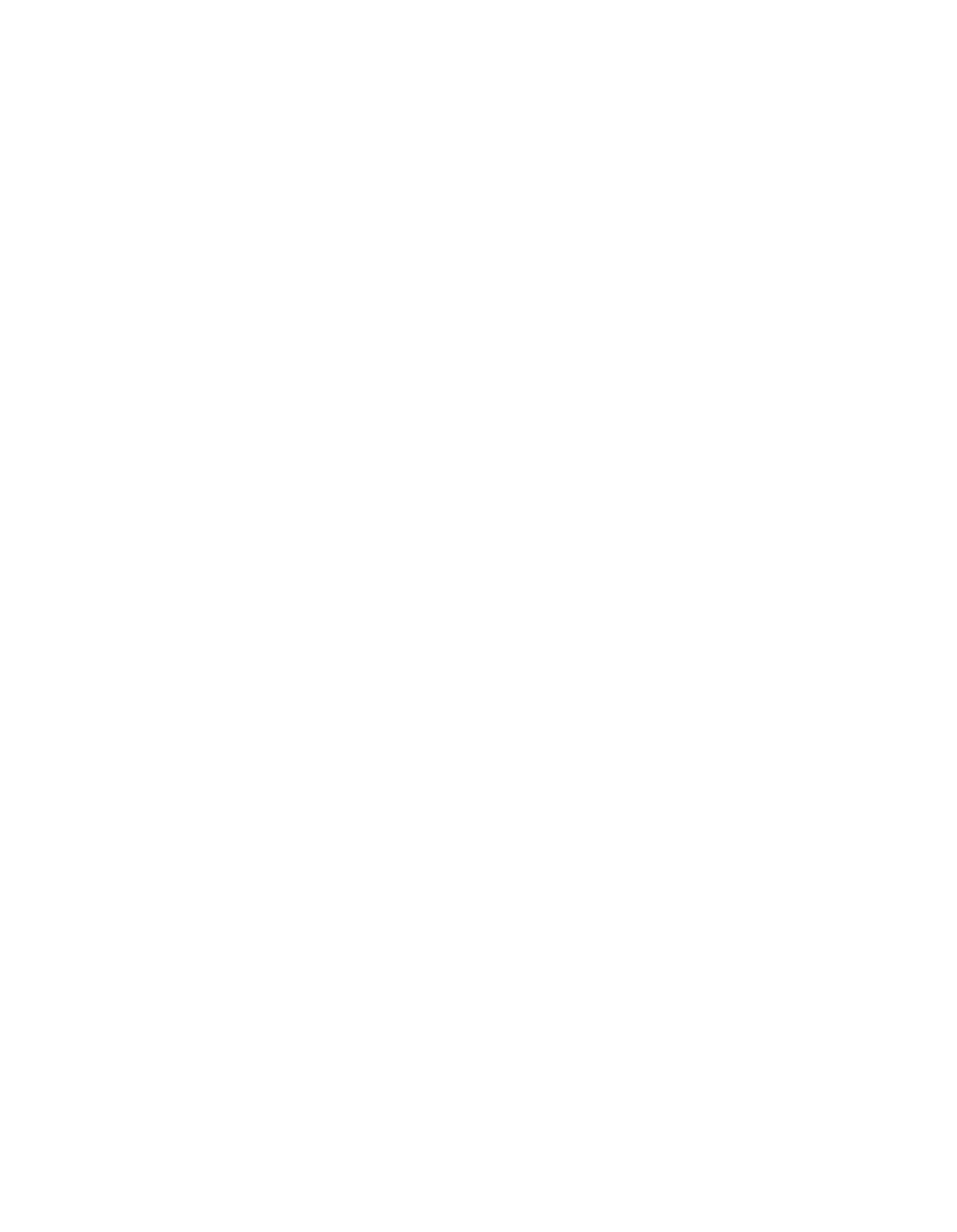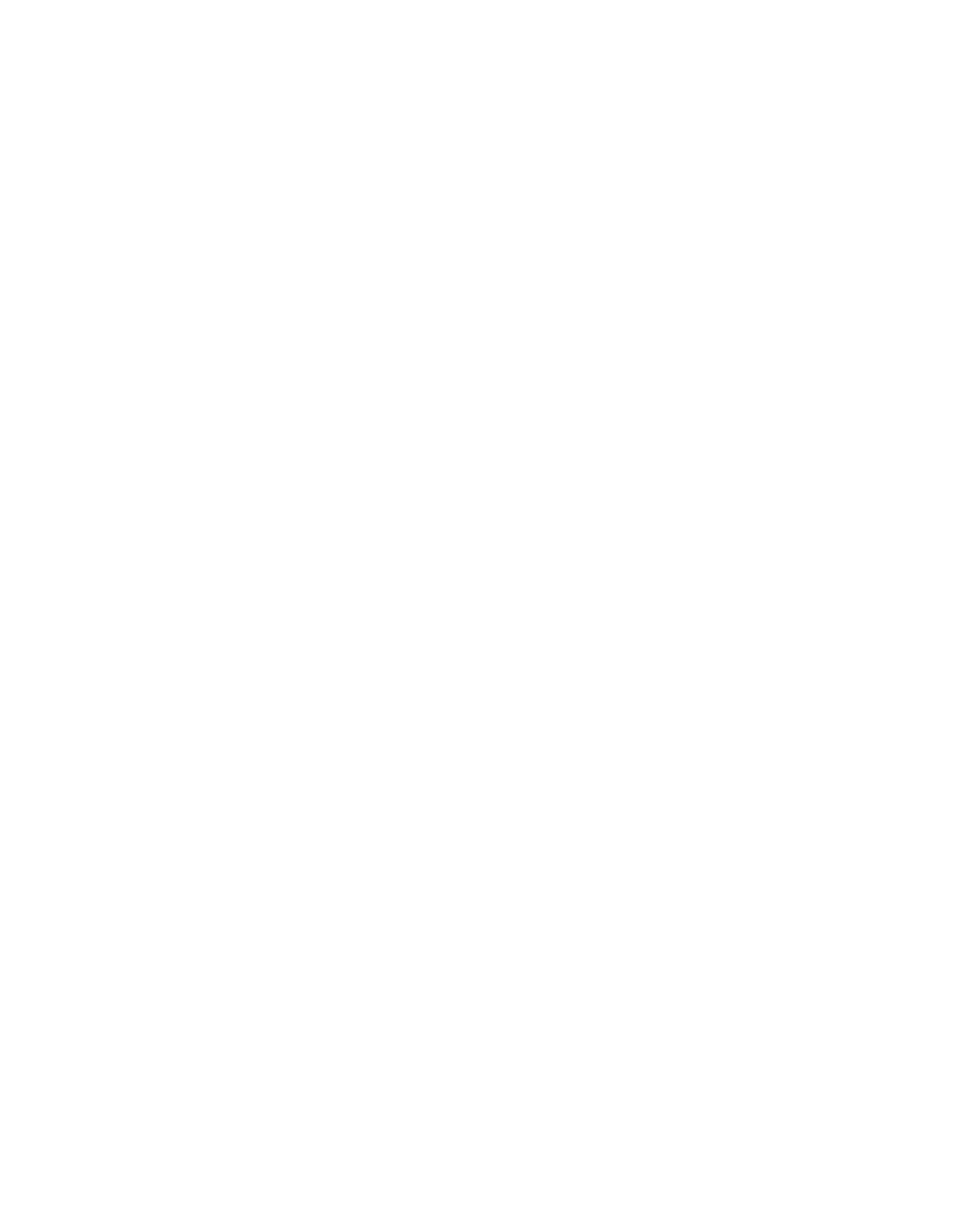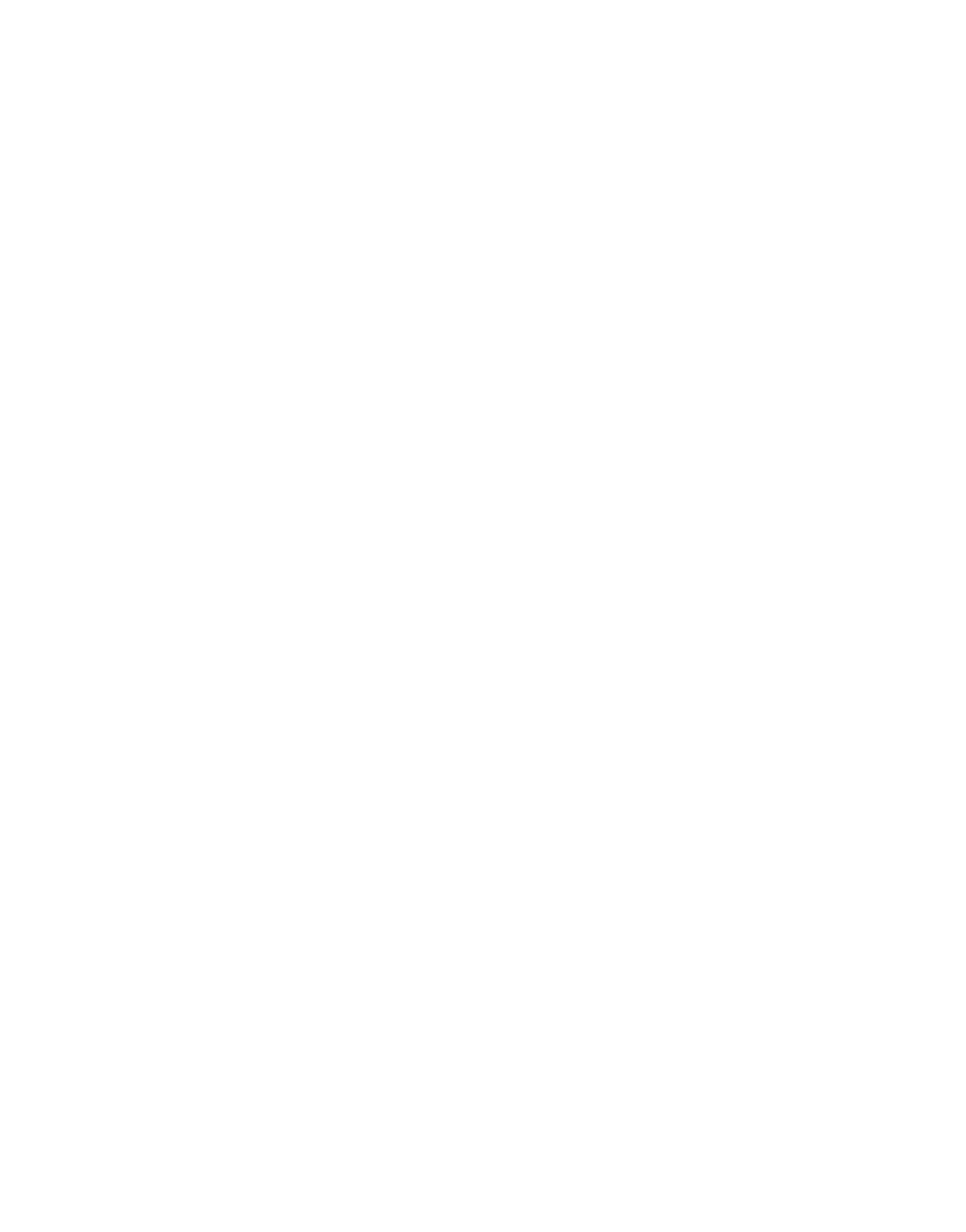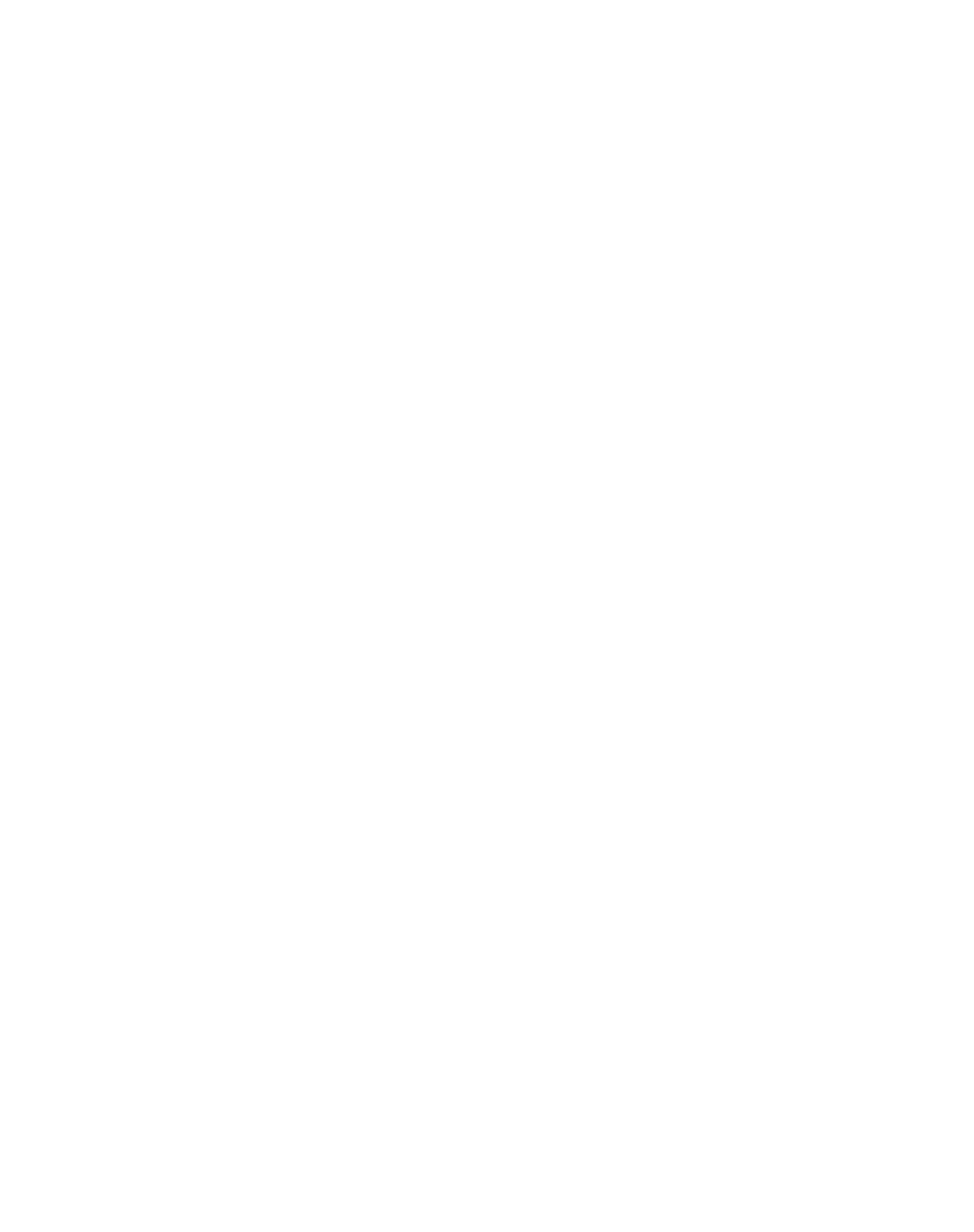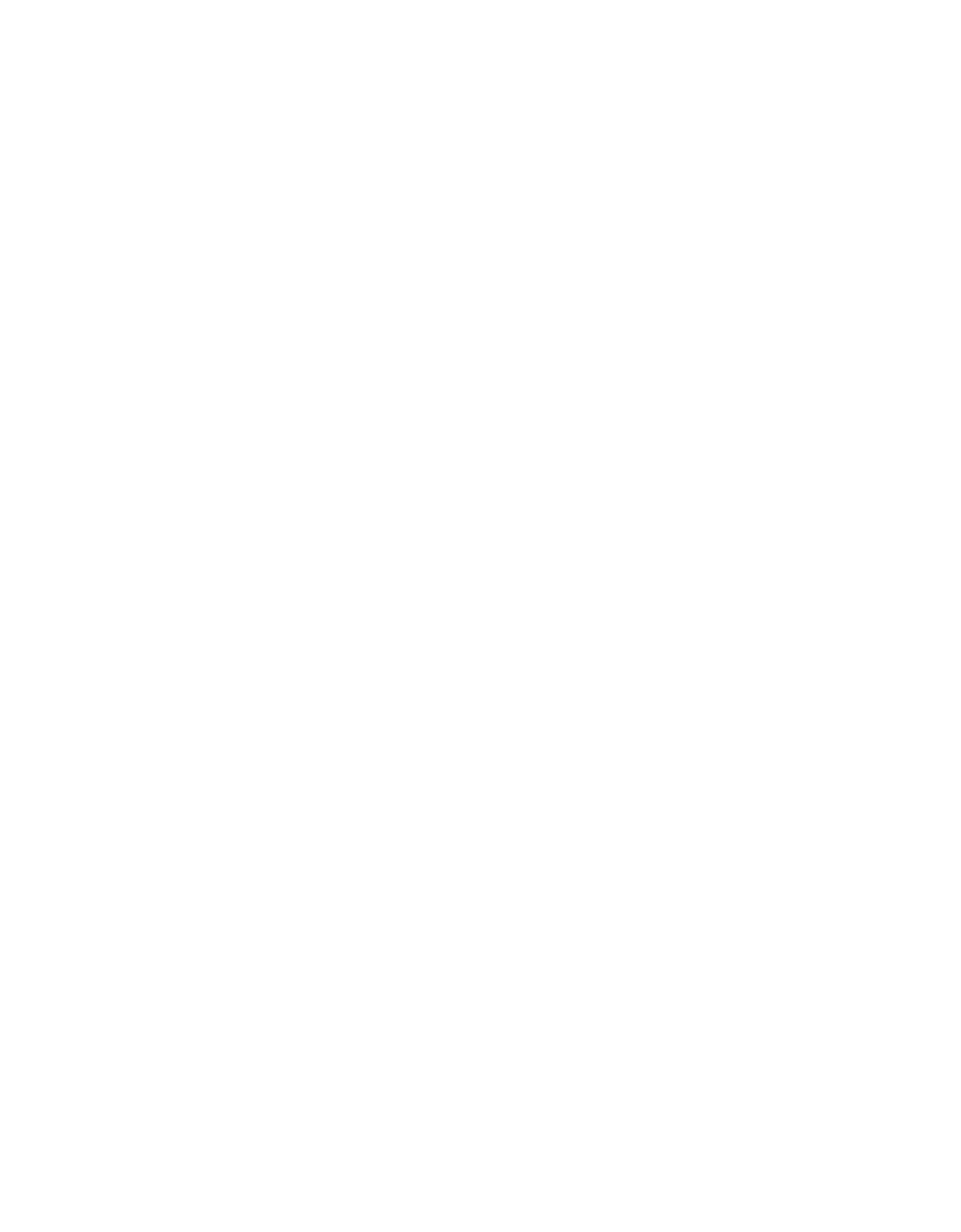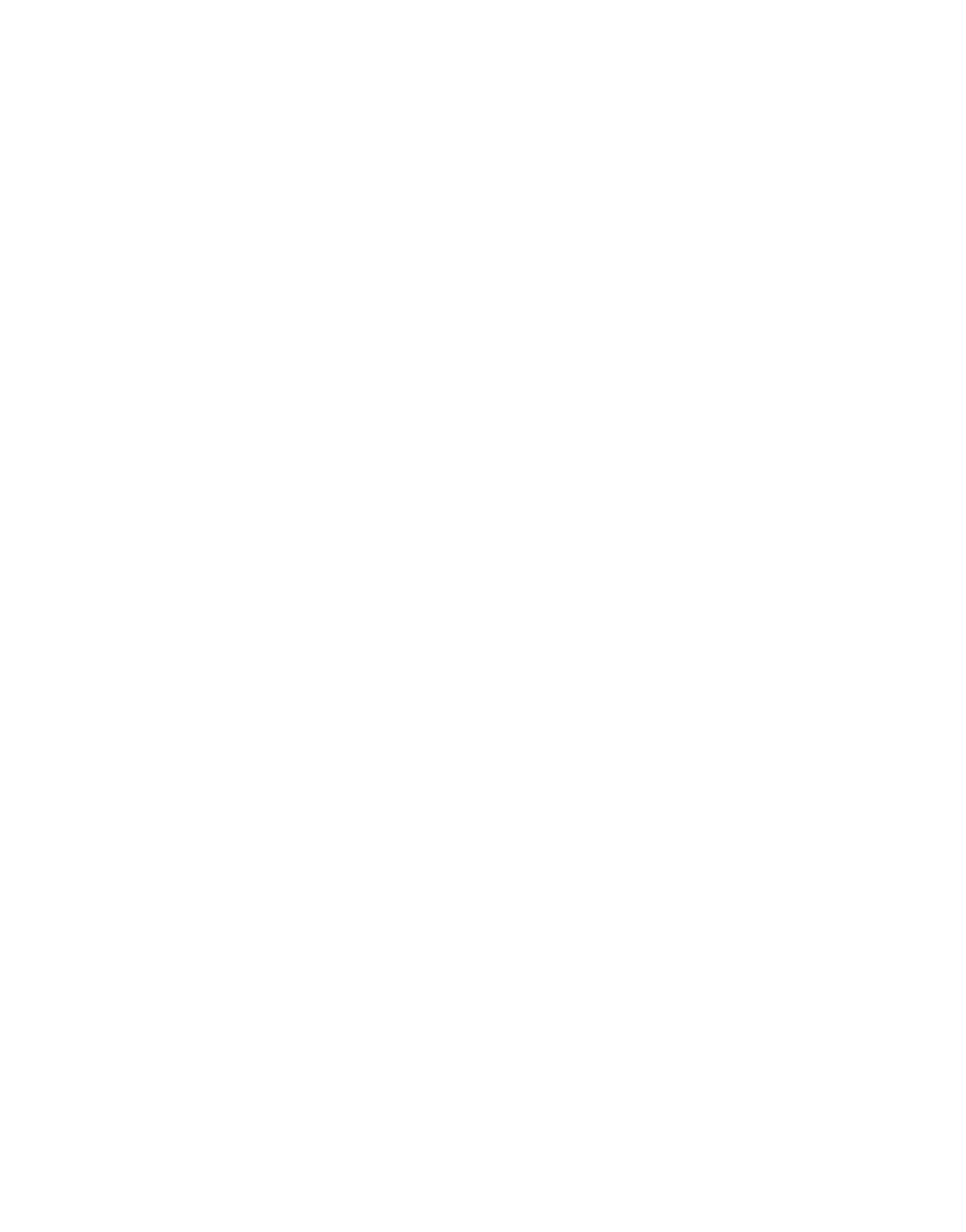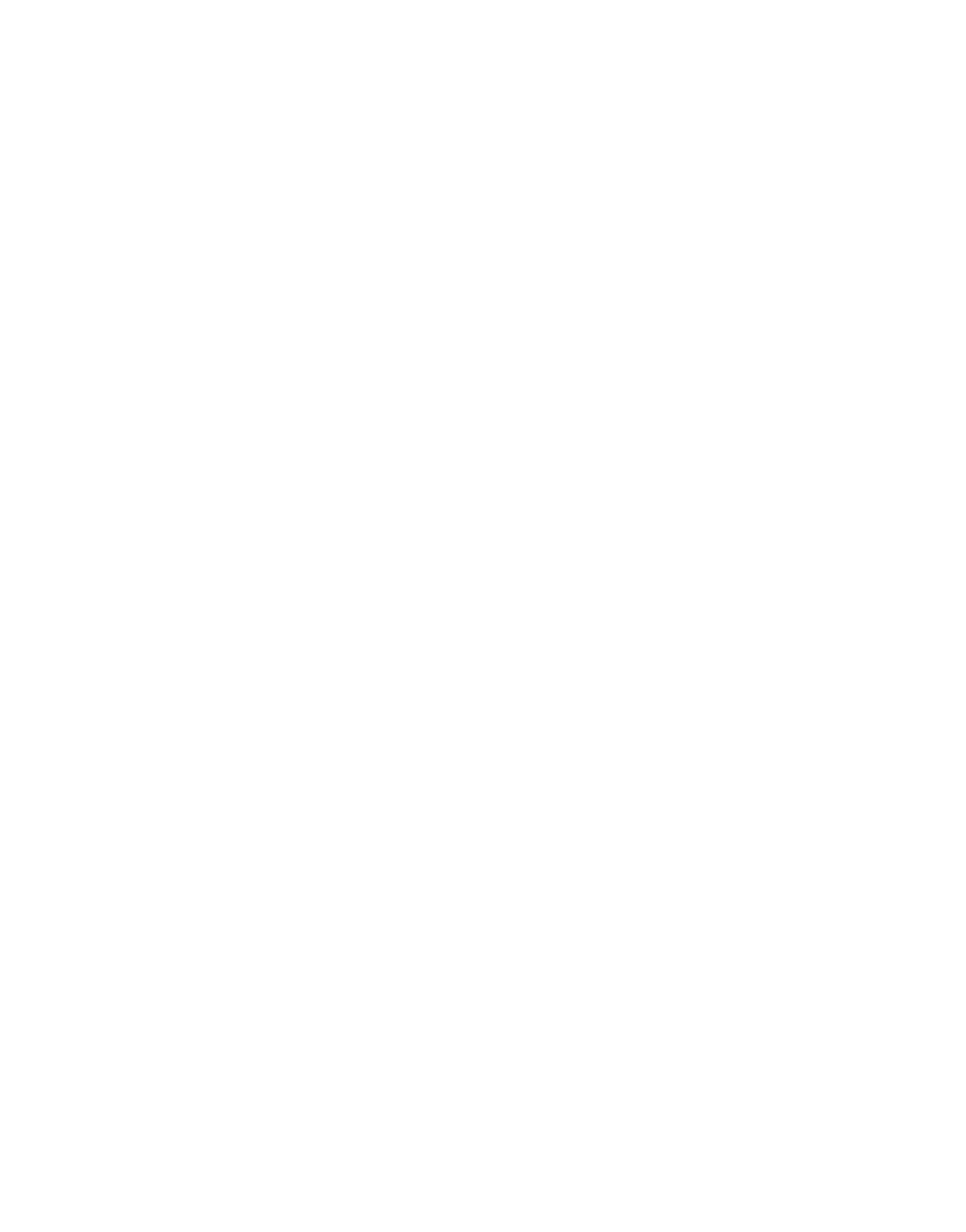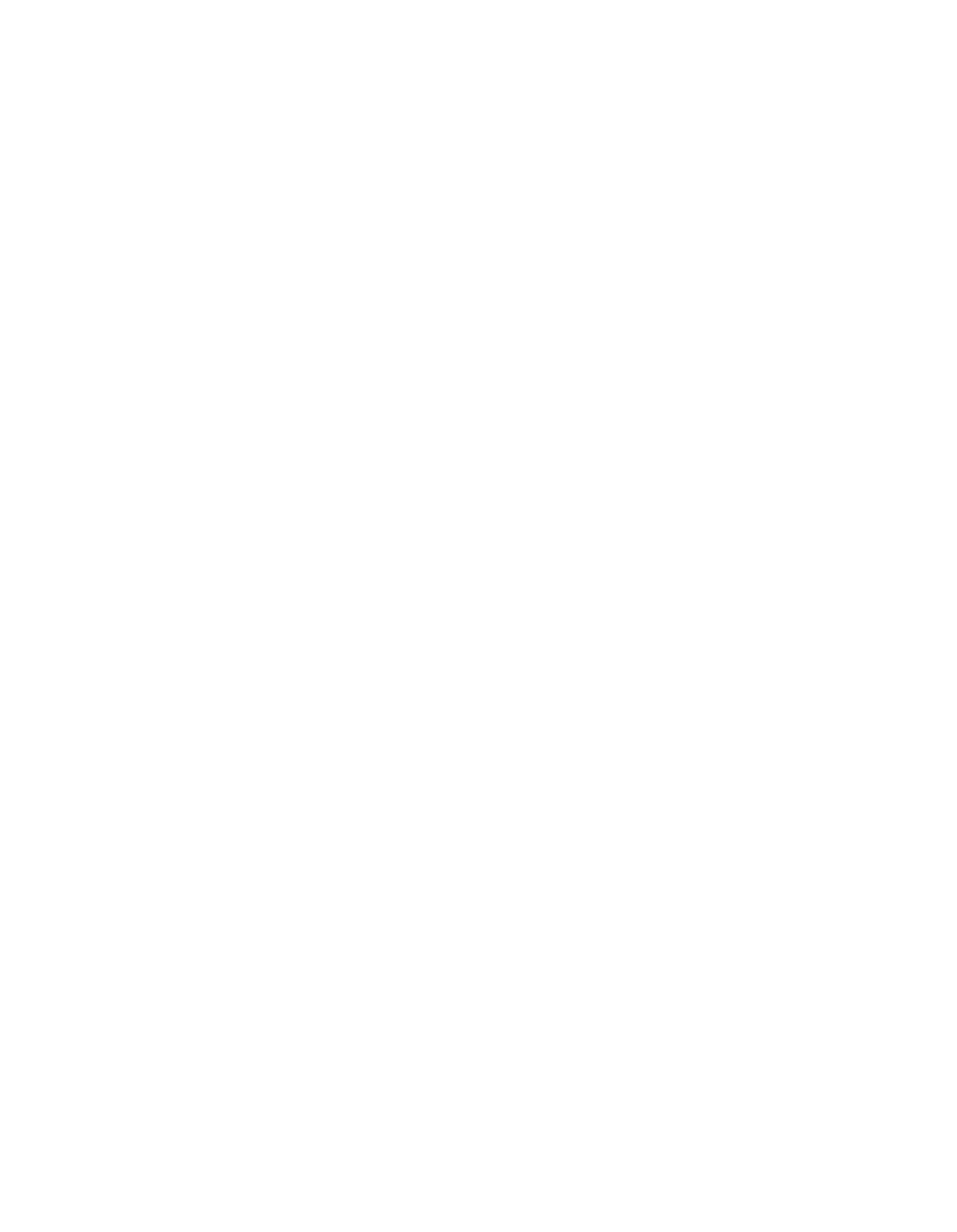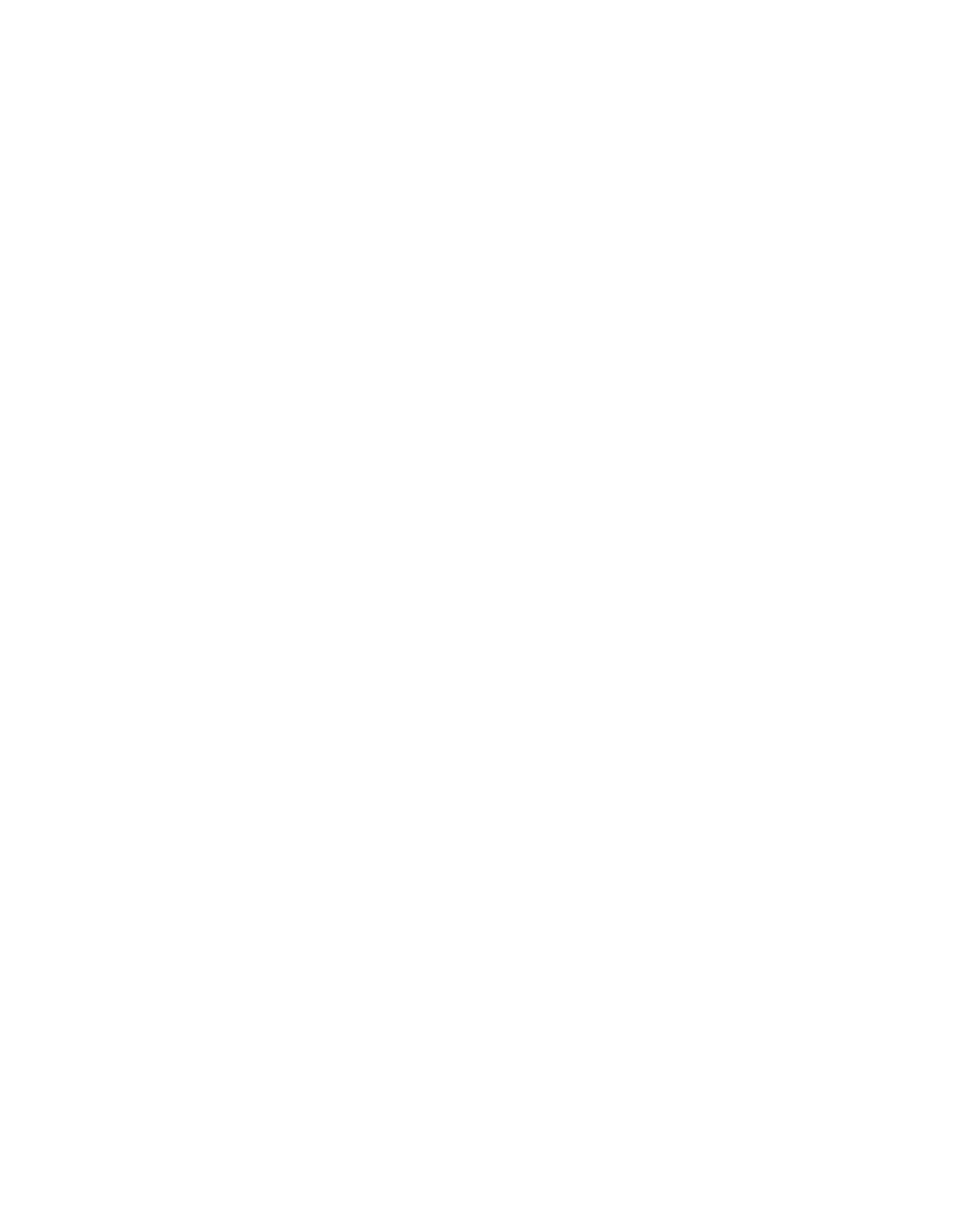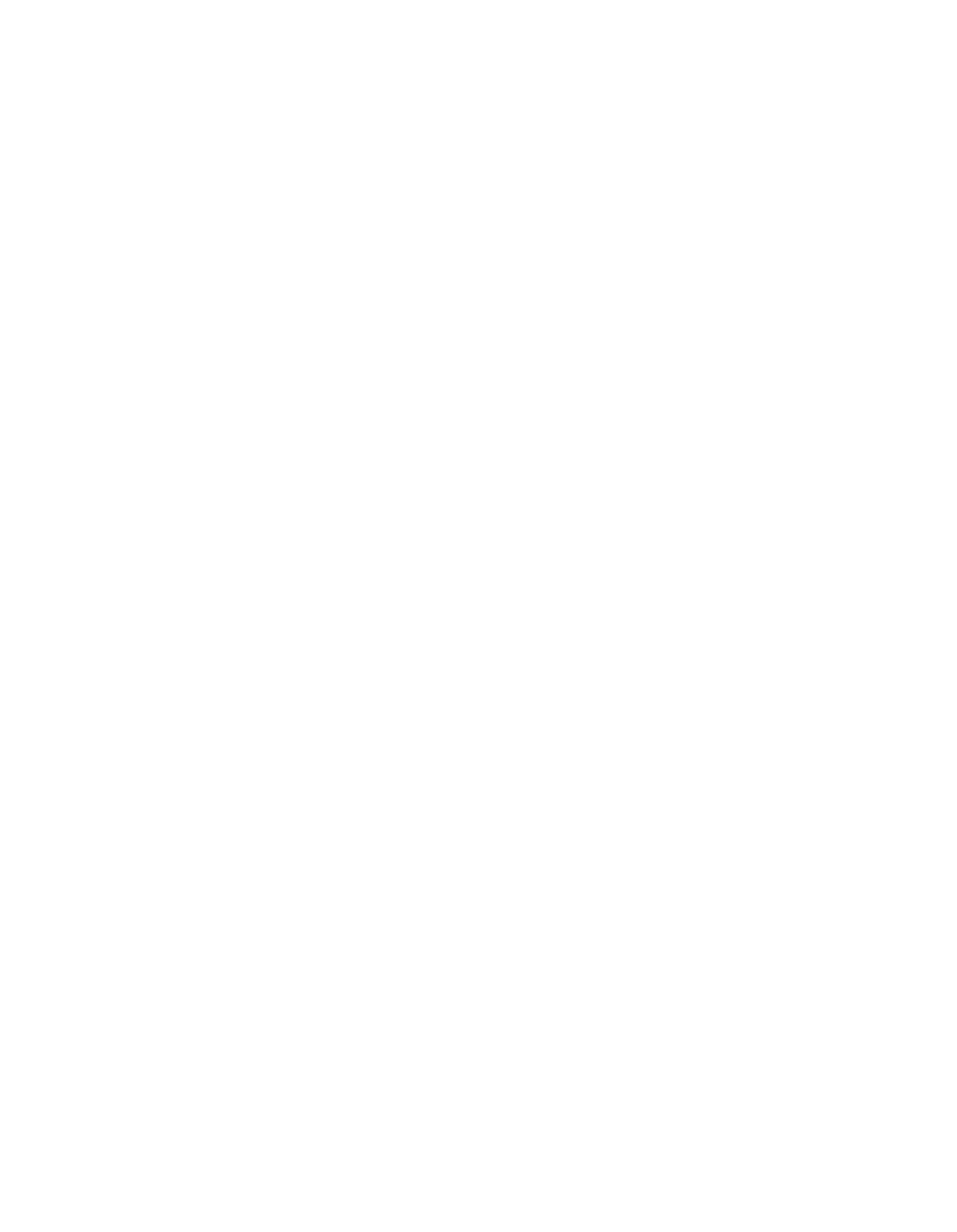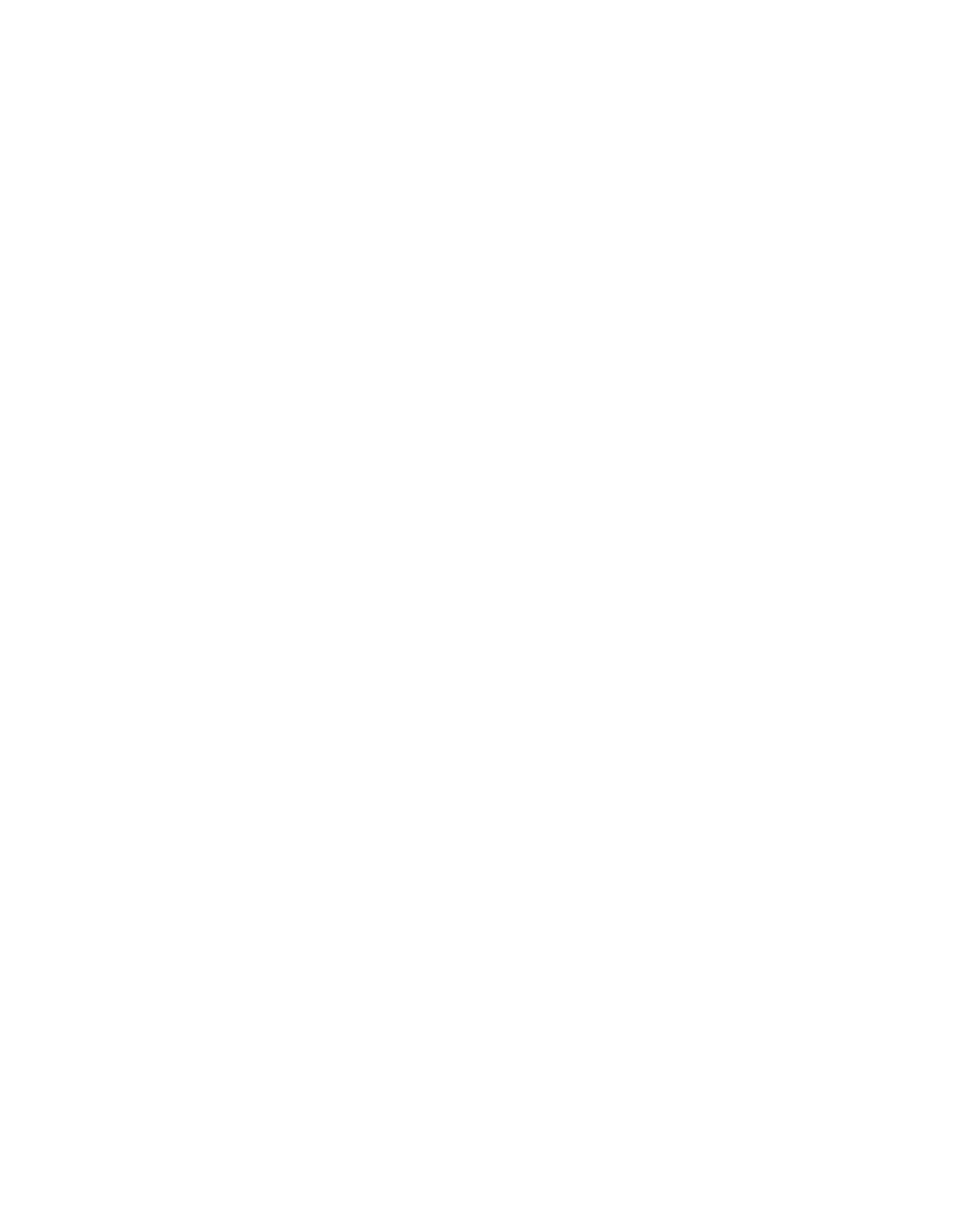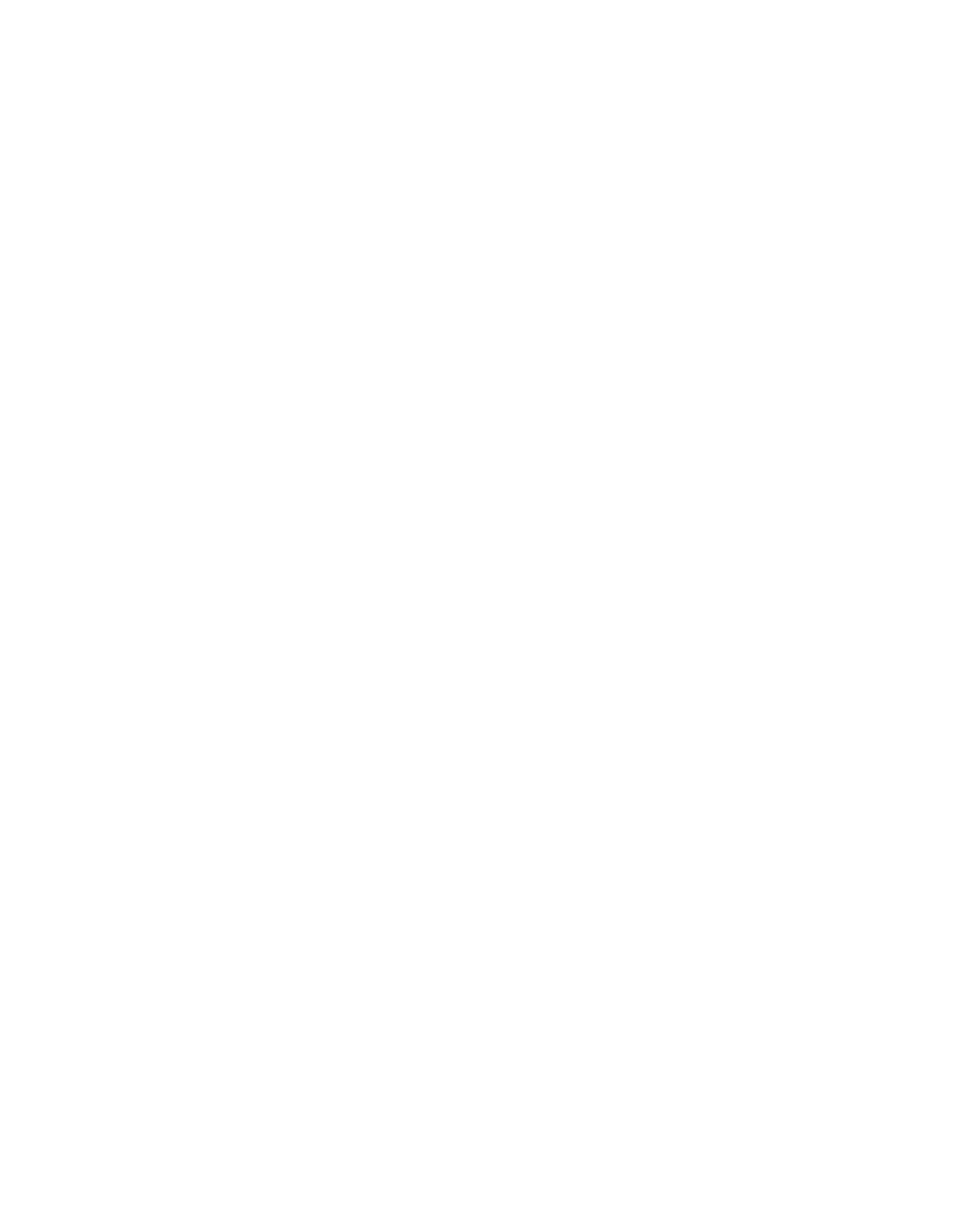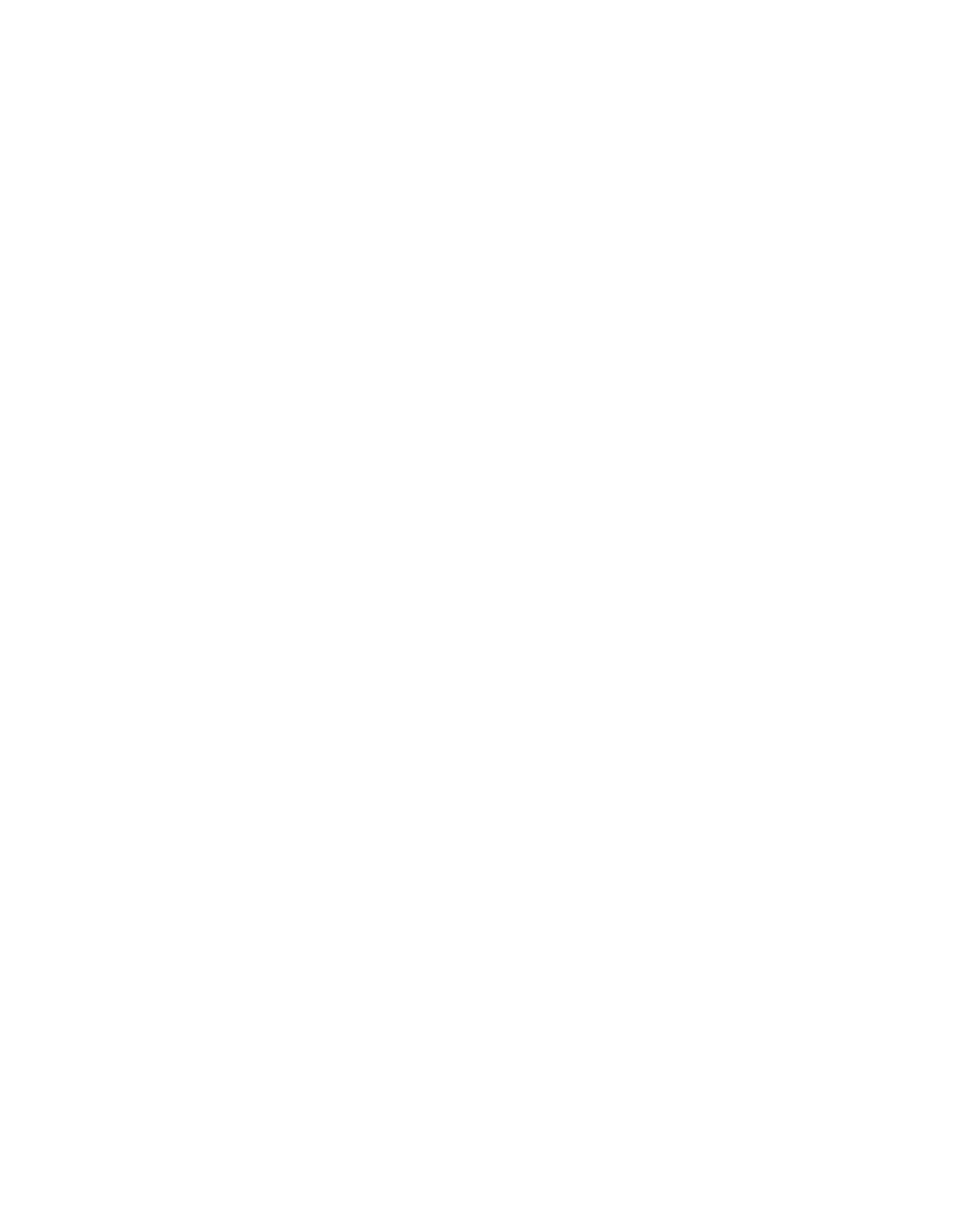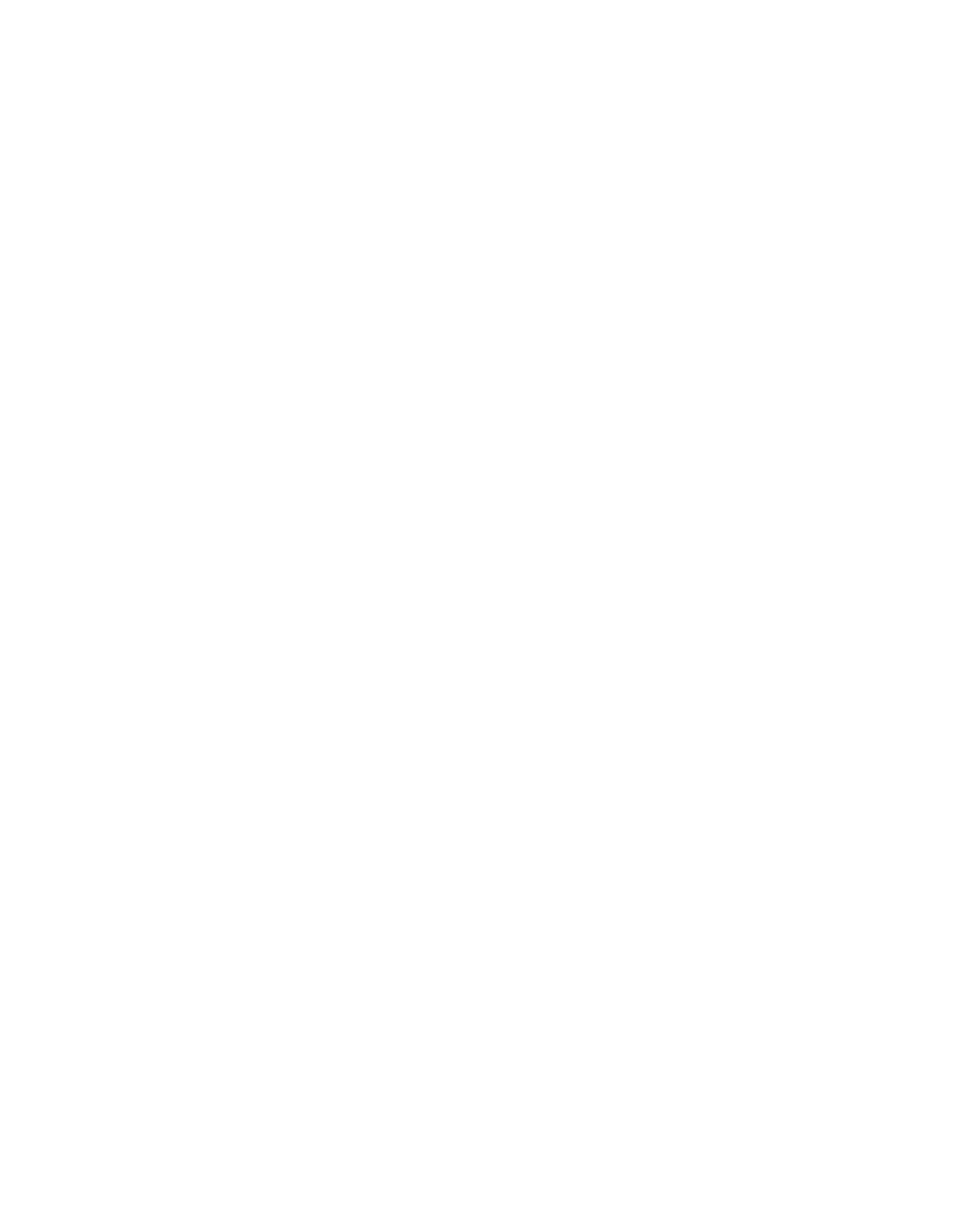ILLINOIS POLLUTION CONTROL BOARD
August 23, 1979
IN THE MATTER OF:
R78—3,4
EMISSIONS OF VOLATILE ORGANIC MATERIAL
OPINION OF THE
BOARD
(by Mr. Dumelle):
This consolidated proceeding
was initiated when the Agency
filed a proposal on May 19,
1978 to amend Rules
201 and 205 of
the Air Pollution Control Regulations.
The proposal
(R78—3)
dealt with volatile organic emissions from solvent metal clean-
ing and petroleum refineries and was published in Environmental
Register
#172 on May 22, 1978.
Hearings were held on R78—3
on July 10,
1978
in Chicago and July 12, 1978 in Springfield.
Further amendments
to Rules 201 and 205 were filed with the
Board on July 18,
1978.
These amendments
(R78—4) concerned
volatile organic emissions
from surface coating operations,
bulk gasoline plants,
bulk gasoline terminals,
liquid petroleum
storage vessels, gasoline service stations and cutback asphalt.
P38-4 was published in Environmental Register 4176 on ~3uly21,
1978.
The two proceedings were consolidated on August
3,
1978.
Additional hearings were held on August 28, 1978 and September
25,
1978 in Chicago and on August 30, 1978 in Springfield.
Amendments
to the Agency’s consolidated proposal were published
in Environmental Register #181 on October 16, 1978 and Environ-
mental Register #182 on October 27, 1978.
On January 29, 1979
the Board received a study from the Institute of Natural Resources
entitled Economic Impact of Incorporating RACT
I Guidelines for
VOC Emissions into the Illinois Air Pollution Control Regula-
~42ps,_R78—3
and R78—4
(INR Document No.
79/01).
Hearings were
held on the study on March
5,
1979 in Chicago, March
9,
1979
in Rockford and March
12,
1979 in Decatur.
The Agency presen—
tad an amended proposal at the March
5,
1979 hearing
(Ex.66)
which
combined all prior amendments
arid suggested additional
changes.
Exhibit
66 was corrected at the March 12, 1979 hear-
ing.
On March
29,
1979 the Board adopted a Proposed Order
which listed amendments
to Rules 103,
104,
201 and 205 of the
Air Pollution Control Regulations.
The Proposed Order was
published
in Environmental Register #192 on April
3, 1979.
On July 12,
1979 the Board adopted a final Order in this pro-
ceeding.
This Opinion is intended to support and explain the
Board’s
final Order.
35—243
—2—
NEED FOR THE REGULATION
Numerous violations of the ozone standard have been detec-
ted in various areas of
Illinois.
The highest ozone levels
generally occur in the Chicago and St. Louis areas
(R.102).
The highest one—hour concentration measured in 1977 was 0.266
ppm (R.98).
(For a description of the Illinois ozone monitor-
ing system,
see R.94—114 and Ex.8).
Non—attainment areas for
the old oxidant National Ambient Air Quality Standard
(NAAQS)
of 0.08 ppm consisted of the 23 following counties:
Adams,
Boone, Champaign,
Cook,
DeKaib, DuPage, Grundy,
Kane, Kankakee,
Kendall, Lake, LaSalle, Macon, Madison, McHenry, McLean,
Peoria,
Sangamon,
St. Clair, Tazewell, Will, Williamson and Winnebago
(R.25).
All other areas of the State were unclassified be-
cause no ozone monitors were located in those areas.
During the time frame of the hearings in this proceeding,
U.S. EPA revised the oxidant NAAQS based on new health effects
information.
The NAAQS was changed in the following respects:
1)
the ozone NAAQS was changed from a level
of 0.08 ppm to
0.12 ppm for both the primary and the secondary standard;
2)
the chemical designation was changed from photochemical
oxidant to ozone;
3)
a statistical rather than a determinis-
tic form of the standard has been adopted; and 4) the measur-
ing method has been changed from a single one hour period to
the highest one hour average on a given day (R.1294).
In order
for a particular site to be in compliance with the new stan-
dard, the number of days
in which the highest one hour average
ozone value exceeds
0.12 ppm must be
less
than or equal
to
once per year,
averaged over three consecutive years
(R.66).
The Agency re-evaluated the attainment versus non—attain-
ment status of Illinois
in light of the new standard and
classified 20 counties
as non—attainment.
They are:
Adams,
Boone,
Cook,
DeKalb,
DuPage, Grundy, Kane,
Kankakee, Kendall,
Lake, LaSalle, Madison, McHenry, Monroe,
Peoria,
Sangamon,
St.
Clair, Tazewell, Will and Williamson.
The counties of
Champaign,
McLean, Macon and Crawford have been reclassified
as attainment
(R.1298), while all the other counties have
been designated as unclassified
(R1299).
Part D of the Clean Air Act
(42 U.S.C. §~7501—7508)pre-
scribes actions which must be taken by all states
in which
the National Ambient Air Quality Standards
(NAAQS) have not
been achieved.
Since many areas in Illinois have failed to
meet the NAAQS for ozone
(see non—attainment discussion,
supra),
these provisions of the Clean Air Act
(CAA)
must be
addressed.
Section 172(b)
of CAA
42
U.S.C.
§7501(b)
states that
Illinois must “...(2) provide for the implementation
of all
reasonably available control measures as expeditiously as
practicable;
and
(3) require,
in the interim, reasonable
35—244
—3—
further progress
as
defined
in Section 171(1)
including
such reductions
in emissions from existing sources
in the
area as may he obtained through the adoption, at a minimum,
of reasonably available control technology;..
.“
Section 171
(1)
42
U.S.C.
§7501(1)
defines the term “reasonable further
progress”
as “...annual
incremental reductions of the applic-
able air pollutant.
.
.which are sufficient.. .to provide for
attainment of the applicable national
ambient air quality
standard by the date required
in Section 172(a).”
In this
proceeding the applicable air pollutant is ozone.
The date
required
in Section 172(a)
is December
31, 1982 unless Illinois
demonstrates
this date cannot be met
“.
.
.despite the implemen-
tation of all reasonably available measures.
.
.‘
In that case,
the date becomes December 31,
1987.
The Clean 7~irAct includes sanctions which may
be imposed
against Illinois
if these directives are not followed.
Section
176(a)
of CAA
42
U.S.C.
§7206(a)
provides that certain high-
way construction
funds must be withheld if Illinois does not
follow the mandate of Section 172 in a timely fashion.
Section
316 of CAA provides that grants for the construction
of sewage
construction works
in certain areas nay be withheld.
Section
110(a)(2)(I)
of CAA provides that Illinois must include
a
restriction in its State Implementation Plan
(SIP) that pro-
hibits the construction of any major stationary source in
a
non—attainment area after June 30, 1979 under certain condi-
tions.
This prohibition can he avoided if Illinois revises
its SIP to comply with the provisions of Part D of CAA.
Tht’
amendments
which
the
Board
has
adopted
in
this
pro-
ceeding
ar~~
part
of
illinois’ attempt
to satisfy the
require-
ments
of.
CAA,
avoid
iLn
sanctions,
and
bring
oxidant
levels
down
to
safe
levels.
On
February
24,
1978
the Administrator of U.S. EPA issued
a memorandum
(Ex.2) outlining the actions each state would
have
to take
before
a
revised
SIP
could
be
approved.
Carbon
monoxide
and
oxidant
issues
are
addressed
in
Exhibit
2
in
part
as
follows:
“Adequate
plans
must
provide
for
the
adoption
of
reasonably
available
control
measures
for
stationary
and
mobile
sources.
“For
stationary
sources
the
1979
oxidant
plan
submis-
sions for major urban areas must include,
as a minimum,
legally enforceable regulations to reflect the applica-
tion of reasonably available control technology
(RACT)
to those stationary sources for which EPA has published
a
Control
Techniques
Guideline
(CTG)
by January,
1978...
“For rural non—attainment areas,
the O~plan must provide
the necessary legally enforceable procedures for the con—
35—245
—4—
trol
of
large HC sources
(more than 100 ton/year poten-
tial emissions)
for which EPA has issued a CTG by January
1978...
The Final Order in this proceeding represents the Board’s
interpretation of what constitutes RACT for each category of
industry for which U.S.
EPA had published a CTG by January,
1978.
It should be noted that the Board is not limited to
adopting only RACT.
Sections 10 and 27 of the Environmental
Protection Act
(the Act) provide the Board with authority to
adopt emission standards and standards
for the issuance of
permits which promote the purposes of Title II of the Act.
This broader authority under the Act has enabled the Board to
deviate from some of the narrow restrictions of RACT to adopt
amendments
which are in fact more stringent than RACT and pro-
vide for a more equitable statewide approach to ozone non—
attainment.
OZONE FORMATION AND CONTROL
“All the evidence presently available
indicates that in
the urban centers and adjacent downwind areas where severe
oxidant problems occur,
the major cause by far is photochemi—
cal oxidant formation”
(Ex.37, p.4—l).
Photochemical oxidant
(0)
is
a mixture
of pollutants which are formed in the atmos-
phere rather than emitted directly from sources
of air pollu-
tion.
Reactions of volatile organic compounds
(VOC), oxides
of nitrogen
(NO~),and oxygen
in the presence of sunlight form
a mixture of photochemical oxidants which consists of ozone
(03)? nitrogen dioxide
(NO2), peroxyacetylnitrate
(PAN),
smaller amounts of other peroxy compounds, and other photo—
chemical products such as aldehydes, nitrous acid,
nitric
acid and formic acid
(Ex.26).
Although there are still many unanswered questions about
the formation of O~in the ambient atmosphere,
much informa-
tion exists on the stoichiometry, kinetics and mechanisms
of
these reactions.
Because of the need to simplify conditions
in order to facilitate research,
all the experiments on the
mechanism of 0
formation have been done in laboratory
smog
chambers.
How~ver, there are limits to the validity of extra-
polating research findings based on mixtures containing a
limited variety of VOC to actual ambient conditions with a
complex mixture of VOC.
Paisie testified that
all reactions
that occur in the laboratory probably also occur in the ambient
atmosphere, possibly with varying significance.
However,
there may also be reactions
in the ambient atmosphere which
have not been found
in laboratory conditions
(Ex.26).
.35—246
—5—
The ove~al.iphotochemical reactions process has two dis-
tinct stages which occur consecutively.
In the first stage,
nitric oxide
(NO)
is converted to NO2 without an appreciable
buildup of 03 or other non-NO2 oxidants.
The second stage
begins
when
almost
all
the NO has been converted to NO2 and
is characterized by a rapid buildup of 03 and other oxidant
and non—oxidant products.
Several mechanisms exist for the
formation of photochemical oxidants.
The following are the
main reactions in the
formation
of
ozone:
UV
NO2
NO+O
(1)
Light
03 ÷M
(2)
03
+
NO
NO2
+
02
(3)
X02
+
NO
NO2
+
XO
(4)
2N0
+
°2
2N02
(5)
where:
X is hydrogen
(H) or organic radicals
(R or
RCO), and M
is any third molecule which
is available to
carry off excess energy.
In step
(3), the NO product from photolysis
of NO2
(step 1)
reacts rapidly with and consumes 03
to regenerate NO2.
If
it were not for other processes which convert NO into NO2,
ozone would not accumulate to significant levels.
However,
as shown in steps
(4) and
(5), other conversion processes
exist.
The reaction of NO with X02
(step
4)
is considered to
occur to
a greater degree than the reaction with molecular
oxygen
(0.))
shown in step
(5).
In step
(4) the reaction of
NO with Ra
occurs only in the presence of photochemically
reactive o~ganiccompounds.
If these compounds are present,
the reaction can proceed rapidly enough to cause an atmos-
pheric accumulation of significant levels of ozone;
if reactive
organics are not present, significant levels
of ozone do not
accumulate.
Recent research, based on computer simulation techniques,
has led
to the current theory that the hydroxyl radical
(H0)
rather than atomic oxygen and ozone may be the most active
chemical
in the consumption of hydrocarbon
(HC)
and aldehyde
reactants and thus be of major significance
in the oxidation
of organic and inorganic reactants.
“The
radicals 0H,
and R02
have also been identified as having major roles
in
the oxidation of NO into NO2”
(step 4)(Ex.37,
p.4—8).
Even though oxidants can be formed from natural sources
of hydrocarbons
or be due
to stratospheric ozone intrusion,
35—247
—6—
most photochemical oxidant
is formed from reactions of anthro—
pogenic VOC and NOR.
Research by Buffalini has indicated that
although ozone may be produced
in rural areas from natural
sources of
VOC,
the amount produced would not he sufficient
to cause vioiat~onsof the ozone standard.
Violations
of the
ozone standard which have occurred in rural areas have been
attributed to pollution transport
(R.1140).
Meteorological factors play an important role in the for-
mation
of photochemical oxidants.
Atmospheric mixing and
diffusion are important
in the transport and dispersion of
oxidant precursors which have been emitted.
Atmospheric sta-
bility, wind speed,
and topography determine the rate and
extent of atmospheric dispersion.
Since some of
the precur-
sor reactions are photodissociations,
sunlight and temperature
affect the rate and extent of oxidant formation.
Temperature
has been found to have a significant positive effect.
It has
been suggested that at temperatures less than 55°to 60°F(13°
to 16°C), concentrations of photochemical oxidants will not
exceed 0.08 ppm
(Ex.37, p.4—36).
In recent years,
several studies of
long range oxidant
transport
(“oxidant transport” refers to the transport of
either oxidant/ozone or oxidant precursors) have been per-
formed and found to occur on three geographical
scales.
“1) The urban scale transport,
as a result of which the peak
oxidant concentrations develop in the suburbs some miles down-
wind from the city—core area where the oxidant/ozone and their
precursors originated;
2) The mesocale transport that encom-
passes
land— and sea—breeze circulation, and the formation of
urban oxidant plumes that create oxidant problems as far as
100 miles or more downwind from the source city; and 3) The
synoptic
scale
transport,
a
much
longer
and
broader
range
of
transport associated with high pressure systems”
(Ex.
37,
p.4—38).
Results
from
the
urban
scale
transport
studies
indicate
• .that conditions at the center of source—intensive areas
are not the most conducive conditions for oxidant accumulation,
mainly because of the strong scavenging effect of oxidant pre-
cursors, especially nitric oxide.
At higher elevations
or at
horizontal distances downwind from the sources, where the pre-
cursor scavenging effect
is
less
important, oxidant concentra-
tions are,
in general, greater, and their levels are determined
primarily
by
the
intensity of the photochemical activity and
ambient
dilution.”
Peak
oxidant
concentrations
for several
cities
have
been
measured
at distances between 5 to 85 miles
downwind
of
the
city’s
center
(Ex.36,
p.4—38).
Numerous
studies
of
mesocale
and
synoptic
scale
trans-
port of urban oxidant plumes have concluded “that many cities
produce urban oxidant plumes that cause elevated oxidant con-
centrations in downwind areas as far as 300 km
(190 miles) or
35—248
—7—
more from the source city”
(Ex.37,
p.39—40).
A study of an
episode of wide—spread haze with elevated ozone, concentra-
tions in
southern Florida reported that
“.
.
.The source region
appeared
to
be
the
industrial
area
among
the
states
south
of
the Great Lakes making
a transport distance of over 1000 miles
(1600 km) of
which
400
miles
(640 km) were over the Gulf of
Mexico.
Both the haze and the ozone of its precursors may
have been augmented along the route”
(Ex.37,
p.4—42).
Such
long range transport can only occur
in an air layer aloft
since ground level ozone would be destroyed by reactions with
NO and VOC and reactions on surfaces.
Dr. Arnott
from
the
Wisconsin
Department
of
Natural
Res-
ources testified on ozone transport from Illinois into Wisconsin.
It
is his belief that Wisconsin cannot achieve the new ozone
standard
unless Illinois adopts and enforces state—wide VOC
regulations
(R.1574—5).
Aerial
monitoring
for ozone done in
1976
found
that
ozone
laden
air
enters
Wisconsin from Illinois
with
higher
concentrations
above
the
ground than at ground—
level
(R.1571).
Levels
in
excess
of
0.2
ppm
were
measured
above
Belvidere
and
Rockford,
Illinois
(R.1572).
Based
on
studies
of
urbanized
areas
which
have
indicated
that
reduction
of
NO
would
be
counter—productive
due
to
the
current
HC
to
NO~ratios,
it
has
been
concluded
that
control
of
organic
compounds
is
necessary
in
order
to
reduce
the
am-
bient
levels
of photochemical oxidants
(R.1138).
A ten—year
trend study of photochemical oxidant formation in the Los
Angeles basin indicated that an 18
reduction in hydrocarbons
was accompanied by a 19
reduction in ozone throughout the
basin
(R.1124).
Another
trend
study
of
six
cities
with
Con-
tinuous Air Monitoring Program
(CAMP)
stations
indicated
that
a reduction in hydrocarbons was accompanied by a reduction
in
ozone
(R.1125).
Lamping
(from Standard Oil Company of
Indiana
on
behalf
of
the
Illinois
Petroleum
Council)
tried
to
refute
the
need
for
hydrocarbon
control.
He
cited
a
study
of
five
American
cities
in
which
hydrocarbon
emissions
reductions
occurred.
In
three
of
those
cities
ozone
levels
increased;
and
in
a
fourth
there
were
no
obvious
changes
in
ozone
levels
(R•954—5).
However,
one
must
be
careful
in
interpreting
short—term
trend
studies
such
as
the
one
cited
by
Lamping
because
of
several
problems:
1)
The
impact
of
meteorological
phenomena
is
very
significant,
and
at
the
present
time
it
is
almost
impossible
to
normalize
out
the
impacts
of
meteorology
and
just
look
at
the
chemistry
(R.1148).
2)
The
emission
inventories
that
accompany
such
studies
are
crude
estimates
of
actual
varia—
Lions
of
hydrocarbon
emissions
from
one
year
to
the
next
(R.1l49).
3)
Problems
inherent
in
monitoring
location
and
technlque
can
influence
the
ozone
levels
measured.
For
example,
if
the
monitor
is
placed
near
a
source
of
NO,
the
0.~ could be scavenged by the NO which could affect the
levels
or ozone monitored at that site
(R•1150).
35—24 9
—8—
Based on
information
in the record, the Board finds that
a reduction in hydrocarbon emissions
is necessary in order to
reduce ambient air ozone concentrations.
This reduction will
occur through the implementation of this rulemaking,
RACT
2
and RACT
3
(still to come),
the Federal Motor Vehicle Control
Program,
and vehicle inspection and maintenance
(if necessary
and adopted in Illinois).
The Board also finds that positive material reduction
rather than substitution of
less photochemically reactive
hydrocarbons
for
more
photochemically
reactive
hydrocarbons
is needed for the following reasons:
1)
Many organic compounds previously considered to have
low
reactivity
have
been found to be moderately or highly reactive
in an urban atmosphere
(R.34).
Most early studies of reactiv-
ity have been done in chambers using a limited variety of or-
ganic compounds.
Hence, possible interactions of organics with
a complex mix of compounds would not have been studied (R.1147).
2)
Compounds of low reactivity can form appreciable amounts
of O~under rnultiday stagnation periods
(R.34).
Many of the
initial reactivity studies were done
in smog chambers with
irradiation times of about six hours.
Information obtained
since those studies indicates that longer periods of time than
six hours should be examined
(R.1144).
3)
Some compounds of
lower or negligible reactivity may have
other adverse effects
-
including adverse health effects
(R.34).
STATEWIDE CONTROL
The adopted regulations are not limited to non-attainment
areas.
The regulations cover a wider geographic area than
mandated by U.S. EPA
(R.1300,
Ex.2).
Several
reasons support
this choice.
Urban emissions may extend beyond urban non—
attainment boundaries and emissions of volatile organic com-
pounds in the rural attainment areas will exacerbate ozone
levels in these and other areas.
Conversely,
rural emissions
may be transported into urban non—attainment areas resulting
in increased ozone
levels.
These transport issues are dis-
cussed more specifically elsewhere in this Opinion.
There
are additional reasons for statewide applicability.
U.S.
EPA
has indicated that
it will not require offsets from non-urban
new sources
if an ozone SIP requires RACT on a statewide basis
(P.C.#102, Attachment A).
Statewide controls now will cause
a greater improvement in air quality and thus allow future
increases in emissions to be accommodated more easily.
For
example, unclassified areas throughout the state could conceiv-
ably become reclassified non—attainment on the basis of PSD
monitoring data; however,
the probability of this happening
is less with statewide controls since air quality in the un-
classified areas will
be improving.
35—250
—9—
Statewide
controls
prevent
industries
located
in
one
area
of
the
state
from
gaining
a competitive advantage over the
same
industries
in
another
area
of
the
state
by
virtue
of
not
having
to
expend
funds
on
controls.
The
Board
notes
that
the
previous
Rule
205
of
Chapter
2 applied statewide.
The
Agency’s
“Rules
For
Issuance
of
Permits
To
New
Or
Modified
Air
Pollution
Emission
Sources
Affecting
Non—attain-
ment Areas”
(Ex.73) provide additional support for statewide
applicability of controls.
In those rules the Agency allows
offsets for emissions
of organic material to come from exis-
ting sources
located within 100 miles of the new or modified
source.
For these existing sources to function as offsets,
they must currently he negatively affecting air quality in
the
non—attainment
areas;
statewide
controls
are
consistent
with
this.
The
Agency
also
indicated
that
models
used
to
predict
emission
control
requirements
are
less
accurate
at
ozone
levels
approaching
the
standard.
These
uncertainties
help
explain
the
difficulties
in
determining
why
some
areas
in
Illinois
are
attainment
and
others
are
not
(R.1303—4).
This
modeling
un-
certainty must be considered
in determining the geographic
applicability
of
control
requirements.
The Board recognizes that
a statewide program will pre-
vent some individual sources from realizing pecuniary gain
through later transfer of offsets
(R.1728—30; P.C.#102).
However,
the
Board
finds
that
the
above—mentioned
reasons
are
sufficient
to
support
the
decision
to
have
statewide
applic—
abillty.
In
order
to
determine
the
amount
of
hydrocarbon
emission
reduction
that
would
be
needed
to
attain
the
ozone
standard,
the
Agency
utilized
the
Empirical
Kinetic
Modeling
Approach
(EKMA)
and
did
a
city—specific
analysis
for
the
major
urban
non—attainment
areas
in
Illinois
(R.1341).
Although
the
SAl
Grid
Model
may
be
a
“more
realistic
computer
model”
than
EKMA
(R.950),
the
Agency
was
unable
to
use
it
because
they
do
not
have
the
time
or
the
necessary
input
to
operate
the
SAl
Grid
Model
(i.35).
The use of
other
oxidant
modeling
methodologies
was
also
investigated
by the
Agency.
However,
they
testified
that
“the
EKMA
estimation
technique
is
based
on
sound
fundmen—
tal
relationships
and
is
able
to
consider
many
of
the
parameters
that
only
the
most
sophisticated
Lagrangian
or
Euclerian
models
can
incorporate”
(R.36).
(EKMA
was
discussed
further
in
the
record
by
Sherman
on
R.36—40,
Matheny
on
R.115-137
and
Larnping
on
R.949—50).
Based
on
EKNA,
the
maximum
emissions
reductions
required
to
meet
the
new
ozone
NAAQS
are:
53
for
the
Chicago
area
(R.1343),
60
for
the
St.
Louis
area,
and
no
additional
reduc-
tions
for
Peoria
which
is
expected
to
meet
the
standard
by
3S—251
—10—
reductions
in
transportation-related
pollution
(R.1343).
In
order
to
achieve
these
emission
reductions,
it
will
be
neces-
sary to implement Reasonably ~\vailableControl Technology
(RACT) on stationary sources throughout Illinois, transporta-
tion control measures and possibly vehicle inspection and
maintenance
in the St. Louis and Chicago Major Metropolitan
Areas,
and continued implementation of the Federal Motor Ve-
hicle Control Program (FMVCP)
(R.1284).
However,
FMVCP, trans-
portation control measures and vehicle inspection and main-
tenance are not the subject of
this proceeding and will not
he
discussed
here.
COMPLIANCE
SCHEDULES AND DEADLINES
As
part
of
this
rulemaking,
the Board has adopted amend-
ments
to
Rules
104
and
205(j)
and
a
new
Rule
205(m).
When
read together these amendments show the “reasonable further
progress” called for
in Section 172 of the CAA.
These amend-
ments
call
for
compliance
schedules
which
may
be
prepared
individually for each source under Rule 104 or a source may
choose
to follow the categorical compliance schedules pro-
vided in Rule 205(m).
These schedules are designed to satis-
fy the requirements of
40 C.F.R.
§51.15.
The schedules follow
the
suggestions
from
U.S.
EPA
which
may
be
found
in
Group
Exhibit
33
and
in
Public
Comment
49.
They
represent
a
balance
between
“reasonable
further
progress”
and
economic
capabili-
ties
(R.l791).
By requiring reports of increments
of progress,
the Agency can keep abreast of problems which may arise in the
development
of
new
technologies
such
as
the
availability
of
low
solvent
technologies
and
the
like
(R.1792).
Compliance
schedules
and
project
completion
schedules
do
not
provide
a
means
to
delay
compliance
beyond
the
deadlines
stated
in
Rule
205(j).
Any
source
which
cannot
meet
a
205(j)
deadline
will
be
required
to
seek
a
variance
under
Title
IX
of
the
Act
and
Part
IV
of
the
Procedural
Rules.
Section
35
of
the
Act
states
that
any
such
variance
granted
by
the
Board
must
be
consistent
with
the
requirements
of
CAA
(see
Sections
110(a)(3),
110(i)
and
113(d)
of
CAA
and
Public
Comment
49)
and
will
he
subject
to
review
by
U.S.
EPA
(see
Section
113(d)
(2)
of
CAA).
RELATIONSHIP
TO
OLD
RULE
205
The
amendments
to
Rule
205
were
adopted
as
additional
emission
controls
—
not
as
substitutes
for
existing
require-
ments.
This
is
being
done
to
keep
the
existing
Rule
205
enforceable
in
case
any
of
the
amendments
are
overturned
by
court
order
or
disapproved
as
SIP
revisions
(R.234—5).
3 5—252
—11—
All users of organic material covered by Rule 205(f) are
required to stay in compliance with that rule unless they are
covered by the new Rule 205(n)(1).
Once these sources have
complied with the applicable standards
in
205(n)(1),
they
will no longer be covered by 205(f).
This relief
is necessary
to avoid conflicts between overlapping regulations.
The relief
does not apply to sources which elect to pursue alternative
compliance under 205(n)(2)
or are exempt under 205(n)(3).
Sources which comply through the use of internal offsets in
205(n)(4) will qualify for this relief.
RACT AND THIS PROCEEDING
RACT has been defined as “the lowest emission limit that
a particular source is capable of meeting by the application
of
control technology that is reasonably available considering
technological and economic feasibility”
(R.43).
In response
to the 1977 Clean Air Act Amendments,
U.S. EPA has published
Control Technique Guidelines
(CTG)
for fifteen emission source
categories that were determined to be sources that could be
further controlled by RACT
(R.44).
The purpose of this pro-
ceeding is
to consider the implementation of RACT on these
fifteen emission source categories.
RACT
is based on control-
ling emissions through reduction rather than through substitu-
tion.
These reductions are to be achieved by retrofitting
add—on control equipment, by changing to water—borne or high
solids coatings
in place of organic materials (R.44) or by
converting to low—solvent coatings
(R.50).
VOLATILE ORGANIC MATERIAL
As part of this proceeding,
many definitions were either
added or changed in order to clarify the rule changes.
Most
of
these definitions are self explanatory and need no further
discussion;
others became issues during hearing.
Nearly all
of the latter group of definitions are discussed with the
related rule.
The definition of “volatile organic material”
applies to several
rules and consequently is discussed here.
The reference to Rules
205(o) and
(p), which were in the Agency
Proposal,
were left out of the final definition because the
term “volatile organic material” is not used in either of Rules
205(o)
or
(p).
A major issue which arose during hearing was whether to
exempt 1,1,1—trichioroethane
(methyl chloroform)
and trichloro-
trifluoroethane from the definition of volatile organic mater-
ial as the Agency originally proposed.
Dow Chemical proposed
exempting methylene chloride also.
The debate did not center
on the photochemical reactivity of these solvents in the tro-
posphere
(the
layer of the atmosphere in which we live) since
data from studies done by U.S. EPA and Dow Chemical show that
35—
253
—12—
methylene chloride and methyl chloroform do not react to form
ozone there
(R.1593); trichlorotrifluoroethane has been shown
to be quite stable and does not form photochemical oxidants
either
(R.1534).
Rather,
the debate centered on the possibil-
ity that these solvents might cause adverse health effects
due to human exposure to these solvents and/or due to deple-
tion of ozone in the stratosphere, which begins at a height
of about
6 miles above Earth
(ozone in the stratosphere helps
shield against some wavelengths of
sunlight that have been
associated with increased rates of skin cancer).
Numerous
exhibits
(group exhibits
29,
56,
80,
84 and 85)
and much tes-
timony
(R.182—199,
299—340,
471—477 and 1588—1674)
centered
on
the health effects and stratospheric ozone
issues.
Testi-
mony was presented that the amount of methyl chloroform in the
atmosphere was increasing at an alarming rate.
However,
upon
examination of the supporting evidence,
one finds that this
statement is based on only a few atmospheric measurements
taken two years apart,
by two different researchers, presum-
ably at different locations;
the levels were 65 ±17 pptv in
1974 versus
89
+
9 pptv and 100
+
10 pptv in 1976
(Group Ex.29).
In short, the Board finds the evidence presented on the issue
that these solvents may deplete the stratospheric ozone
layer
to be inconclusive and largely based on speculation without
solid scientific support.
Based on the information submitted on the health effects
of exposure
to either methyl chloroform or methylene chloride,
it seems unlikely that exposure to either of these solvents
in
concentrations that are likely
to occur in the ambient atmos-
phere would result
in adverse human health effects.
However,
there are still many uncertainties regarding health effects.
It should also be noted that the Occupational Safety and Health
Administration has standards for exposures to both these sub-
stances.
The standards are 350 ppm for methyl chloroform
(R.1626) and 500 ppm for methylene chloride
(R.1640).
Hence,
even without these regulations,
exposure to these substances
in the occupational setting would be limited.
Very little information was submitted regarding trichioro—
trifluoroethane except for a statement that it
is persistent in
the
atmosphere (R.1534) and a statement that it is so expensive
that when it
is used for degreasing that it will be controlled
anyway in order to prevent loss.
The Board has decided not to exempt methyl chloroform
(1,1,1-trichloroethane), methylene chloride,
or trichlorotri—
fluoroethane from the definition of volatile organic material
because these solvents have not been well tested for their
toxicological properties and too many uncertainties exist
regarding potential depletion of the stratospheric ozone
layer.
Due to the expense of these solvents,
in many cases control
of these solvents would have been implemented anyway
(R.1611,
1612,
1664).
Indeed,
one witness stated that the majority of
industries that he has seen are already controlling emissions
and would be
in compliance
(R.191).
35—254
—13—
There
was
some
discussion
that
methyl
chloroform
and
rnethylene
chloride
are
safer
than
many
of
the
less
costly
chemicals
for
which
they
are
substituted
(R.1595,
1609—10,
1614)
and
that
without
the
exemption,
the
more
hazardous
sub-
stances might be preferred.
In response,
it should be noted
that
the
Board’s
decision
does
not
prevent
the
use
of
methyl
chloroform
and
methylene
chloride.
These
compounds
simply
must
be
controlled
like
any
other
volatile
organic
material.
AMENDMENTS
TO
RULE
205
The
following
is
a
discussion
of
new
Rules
205(k),
(1),
(rn),
(ri),
(o),
(p),
(q)
and
(r)
which
are
a
result
of
this
proceeding.
These
rules
cover
the
following
fifteen
RACT
cate-
gories for which CTG’s have been developed:
1.
Petroleum
Refinery
Sources
2.
Solvent
Metal
Cleaning
3.
Bulk
Gasoline
Terminals
4.
Bulk
Gasoline
Plants
5.
Fixed
Roof
Storage
Tanks
6.
Cutback
Asphalt
7.
Service
Stations,
Stage
I
Control
8.
Surface
Coating
of
Large
Appliances
9.
Surface
Coating
of
Cans
10.
Surface
Coating
of
Metal
Coils
11.
Surface
Coating
of
Paper
12.
Surface
Coating
of
Fabric
13.
Surface
Coating
of
Auto
and
Light
Duty
Trucks
14.
Surface
Coating
of
Metal
Furniture
15.
Surface
Coating
of
Magnet
Wire
Insulation
Rule
205(k)_Solvent_Cleani~
Solvent
Cleaning,
or
degreasing,
is
a
method
of
cleaning
metal
or
other
surfaces,
such
as
electronic
circuit
boards
(R.1539)
with
organic
solvents
in
order
to
prepare
those
sur-
faces
for
painting,
plating,
repair,
inspection,
assembly,
heat
treatment,
or
machining.
During
the
course
of
the
hearings
on
the
Agency
proposals,
the
Agency
recommended
removing
the
word
“metal”
from
“solvent
metal
cleaning”
(R.1539,
Ex.82).
The
intent
was
to
clarify
that
the
cleaning
of
circuit
boards
would
be
covered
(R.1548).
The
focus
of
this
regulation
is
on
the
organic
solvents
and
type
of
equipment
used,
and
not
the
sub-
strate being cleaned.
This rule
is not meant to cover the
situation
in
which
a
substrate
is
coated
with
a
component,
then
certain
areas
of
the
component
are
selectively
removed
by
a
solvent
(R.1549).
The
three
types
of
degreasing
operations
are:
cold
cleaning,
open-top
vapor
degreasing
and
conveyorized
degreas—
:35—255
—14—
ing (R.141-4).
The degreasing solvents include petroleum and
petroleum
distillate
derivatives,
chlorinated hydrocarbons,
ketones and alcohol
(R.141).
It
has
been
estimated
that
in
the United States,
emissions from degreasers contribute 725,000
metric tons of VOC annually, which amounts to 4
of the total
VOC emitted (R.144).
The U.S. EPA has calculated the average emission rate for
cold cleaners to be 0.3 metric tons
(0.33 tons) per year per
unit
(R.145).
Waste solvent evaporation from solvent dumped
on the ground and open containers
is the greatest source of
emissions
from
cold cleaners.
Emissions from cold cleaners
are also due to bath evaporation,
solvent carryout,
agitation
and spray evaporation
(R.144).
Open top vapor degreasers have emissions from
(1) diffu-
sion and convection, which
is the largest source;
(2)
carry—
out;
(3) the roof vent;
and
(4) waste solvent
(R.146).
Accor-
ding to U.S. EPA calculati~ns, the average open—top vapo~de-
greaser emits 2.5 kg/hr./m
of opening
(0.5 lbs./hr./ft.
(R. 146).
Solvent
loss from conveyorized degreasers
is associated
with
large and continuous work loads.
Emissions per unit due
to bath evaporation and waste solvents is less than with other
degreasing methods.
However,
the total amount of emissions
is significant due to the high volume of work
(R.146).
Since emission standards for degreasers are not practical,
Rule
205(k)
requires specific control equipment and operating
procedures which were developed to minimize emissions.
Many
industries already have these controls
in place to prevent
loss
(R.193) and because the high cost of halogenated solvents
makes
it economical
to recover the solvent by distillation
and recycling
(R.146).
It has been estimated that compliance
with Rule 205(k)
as compared to no controls would result
in
a reduction in emissions from open—top vapor degreasers of
8,250 to 10,975 metric tons/year (9,150 to 12,200 tons/year);
the
reduction
for
cold
cleaners would be 6,250 to 6,600 metric
tons/per
year
(6,700
to
7,350
tons/year)
(R.154).
Since many
of these controls are already
in place,
the actual emission
reduction to be expected will be somewhat
less.
Small cold cleaning operations with less than 6.8 kg
(15
lb.)
of emissions per day are exempt from the requirements
of
Rule 205(k).
Although larger cold cleaners
do not have
to
obtain an operating permit from the Agency,
they must still
comply with this rule.
Vapor and conveyorized degreasers are
required to obtain an operating permit.
Since this rule is
self explanatory,
no further discussion is necessary.
Rule 103(i) has been amended to include cold cleaning
degreasers
among the classes
of equipment which do not require
35—256
—15—
operating permits.
This was done to avoid the administrative
burden the Agency would face
in processing approximately 40,000
permit applications from relatively small pollution sources
(R.656).
These sources will still be required to comply with
the
requirements
of 205(k)(2)(A)
and (3)(A)
unless they are
exempt under 205(k)(1).
The Agency will enforce these opera-
ting requirements through the inspection procedure
(R.657).
Rule
205(1)
Petroleum
Refineries
Refineries
include
facilities
which
produce
gasoline,
kerosene,
distillate
fuel
oils,
residual
fuel oil,
lubricants
or other products by distillation, cracking,
extraction or
reforming
of unfinished petroleum derivatives.
This rule, which
includes
equipment
specifications
and
monitoring
techniques
for
vacuum
producing
systems,
wastewater
(oil/water) separa-
tors,
and process unit turnarounds,
represents Reasonably
Available
Control
Technology
(R.169).
In Rule 205(l)(2), Wastewater
(oil/water) Separator,
it
is specified that wastewater separators have equipment to
control emissions of organic material unless an odor problem
does not exist.
If there
is no odor problem, only volatile
organic material
needs
to be controlled.
The reason for this
differential between organic material and volatile organic
material
is the possibility that some compounds would fit the
first
definition
and create an odor problem,
but have a low
enough vapor pressure that they would not be covered by the
second
definition.
At the present time,
all nine refineries in Illinois have
control equipment for vacuum producing systems which meet RACT
and follow the specified procedures for process unit turn—
arounds.
Four out o~
the
nine
refineries
already have covers
on
the
oil/water separators which comply with this
rule.
For
the other
five,
it
is believed that the organic compounds are
less than 1.5 psia, which will exempt them from control under
the volatility criterion,
unless they create an odor problem.
If the oil/water separator causes an odor problem,
controls
will he needed
(Ex.62,
p.B—3).
Rule 205(n) Surface Coating
Rule 205(n) (1)(A) Surface Coating at Automobile or Light Duty
Truck
Manufacturing
Plants
This rule applies
to surface coating of the body,
fenders,
chassis,
small parts,
wheels,
etc.
of automobiles and light
duty
trucks.
The term
“automobile” refers to passenger cars
or their derivatives which are capable of seating no more than
twelve passengers.
“Light duty trucks” means motor vehicles
35—257
—16—
or derivatives which are rated at 8,500 pounds or less gross
vehicle
weight
and which are designed for transportation of
property
(e.g. pickups, vans, etc.)
(R.588).
Several methods of reasonably available control technology
were discussed.
They include:
1)
Electrodeposition of water borne primer, which can only
be applied directly over metal
(R.590);
2)
Low solvent primer and topcoat, which would require the
fewest changes
in operating requirements;
3)
Carbon adsorption which,
although technically feasible,
requires large amounts of electricity (R.591);
4)
Incineration for spray booths and primer and topcoat ovens,
also technically feasible, but which requires high energy
consumption;
5)
Water borne top coats, which would require major process
modification for retrofit at the two Illinois plants.
The rules for surface coating of automobiles and light
duty trucks take into account the problems of the two plants
in Illinois.
The compliance plans for these plants reflect
Ford’s and Chrysler’s schedules
for bringing all their plants
in the U.S. into compliance
(R.1277).
Exact adherence to U.S.
EPA RACT guidelines would require
the
equivalent
of electrodip prime and water base topcoat
(R.385).
Even though the technology
is
in use at two Califor-
nia plants,
the costs associated with meeting these limitations
are very high.
The high costs are associated with the use of
water as
a basis for the coatings.
Flash tunnels and ovens
would have
to be lengthened to allow longer drying times.
The
oven temperature would have to be raised and humidity would
have to be controlled.
Incoming spray booth air would have
to be filtered to remove dust which might adhere to the slower
drying
surfaces.
Measures
to prevent corrosion and rusting
of equipment during shutdowns and process changes would have
to be implemented
(R.594—5).
Both Ford and Chrysler made their own recommendations for
methods
of compliance
(Ex.41,75,71,79).
Both methods would
allow only slightly higher emissions, but the cost differen-
tial
is significant
(R.783).
One of the coatings Ford expects
to use is not fully developed yet
(R.790).
However, Ford has
already spent $15 million to install an E—coat system which
will upgrade corrosion protection on cars.
Reduction of VOC
emissions was a secondary consideration
(R.791).
This amount
is
included in Ford’s estimate that it would cost them $32
million to comply
(R.791).
35—258
—17—
Chrysler considers changing to water—base topcoats to be
too
expensive.
Uowever,
they do
support and will follow a
program to achieve
a higher solids content in their coatings
(R.388).
They consider the final repair guidelines to be
reasonable and obtainable and plan to comply with them by 1982
(R.389).
In order to reduce the amount of overspray and emis-
sions,
electrostatic paint facilities will be installed in the
Belvidere plant by 1982
(R.389).
Changing to 50
solids top-
coat and 35
solids for final repair will reduce VOC emissions
by approximately 57,
which is more than 700 tons of emissions
per year
(R.389).
Rule
205( n)
(~icL~cQa~r~9
Can coating includes the application of coating material
to two- or three-piece cans by spraying or roll—coating and
the use of side seam sprays
(in three—piece cans) and end—
sealing compounds.
Due to the wide range
in products for which
cans are used,
a variety of compounds must be used to meet all
the coating requirements.
Cans that contain food must meet
FDA requirements for odor and taste as well as
leak resistance.
At the present time,
American Can Company uses more than 40
different compounds at its two plants
in Illinois.
Approxi-
mately
90
of the compounds are solvent based.
Some,
such as
the coatings used on cans for paint thinner or oil—packed fish,
are water based
(R.741).
One problem with water—based com-
pounds
is that they require heated ovens or dryers
(R.742).
Four types of control technology have been determined
to be RACT for can coating.
A list follows:
1)
Incineration would be most applicable for sheet coaters,
two—piece can coaters and three—piece interior body spray
coaters because of the relatively high drying oven
tem-
perature and
the concentration of organics in the oven
gases.
Side seam spray coat and end sealing compound
applications are not as well suited to incineration be-
cause they are usually air dried.
Due to air drying,
the
gas
volume
is
large,
usually
at
ambient
temperatures,
and contains relatively low concentrations of organics
(R.616).
An additional
problem with incineration is that
significant amounts of energy may be required
(R.618).
2)
Water—borne/high—solids/powder coatings.
a)
Low solvent coatings are available
for some uses
but are not available to replace all coatings at
the present time
(R.618).
b)
Water—borne coatings are presently in use for various
applications.
However,
in order to expand their use,
it may be necessary to replace some existing facili-
ties
(R.619).
35—259
—18--
c)
High
solids
coatings
are
highly
viscous
since
they
contain only 20 to 30
volatile solvent by volume.
Hence,
the coatings may need to be heated before
application
(R. 619).
d)
Powder coatings approach 100
solids.
A major
change in the coating application equipment would
most
likely be needed
to switch to powder coatings
(R. 620)
3)
Carbon adsorption is most readily used as a control method
on low temperature processes which use a limited number of
solvents
(R.620).
If a single solvent is captured,
it
could be recovered for reuse during regeneration of the
carbon bed.
If numerous solvents are captured,
it may be
more economical to use the recovered solvents
as boiler
fuel than to distill them for reuse
(R.621).
4)
Ultraviolet curing involves the use of coatings which
cure almost instantaneously in the presence
of ultra-
violet light.
Hence, only a small amount of organic
emissions are produced
(R.621).
Although
it has been
shown to be successful on some formulations, many coat-
ings are still
in the developmental stage and need FDA
approval
(R.622).
With the application of RACT in Illinois,
the estimated
5,864 tons of VOC emitted annually from can coating operations
would be reduced by 4,847 tons/year (R.623).
The internal offset provisions, which are discussed in
more detail
later, were originally developed for the can coating
industry because of various problems the industry might have
in meeting RACT limitations by the compliance dates.
These
problems include:
(1) The possible decline of three—piece can
side seam technology,
in which case
it would probably be more
cost beneficial to put the research effort into two—piece
technology;
(2) Twenty-five percent of the coating materials
in use represent a large number of coatings, each of which
is
used in small amounts.
Hence,
the cost of developing a low—
solvent coating for a small volume use may outweigh the bene-
fit;
(3) As mentioned before,
some of the coatings are used to
coat cans
in which food is packed.
Reformulation of these
coatings may take several years due to the need for FDA appro-
val and the necessity of long term testing programs to deter-
mine
if food contamination occurs
(R.819).
Testimony by various suppliers of can coating compounds
indicated that they expect that the can coating industry,
through the use of internal offsets, will be able to comply
by the specified compliance dates
(R.829,
1510—16,
743).
~c—9’;n
—19—
In Rule 205(n)(1)(B) the Board has adopted six limitations
on the emission of volatile organic material from can coating
lines.
In Rule
201 the Board has adopted eight new definitions
to clarify the terms in 205(n)(1)(B).
The Board has adopted
these changes so that a specific emission limitation can be
applied to each coating operation which
is typically found in
a can coating plant.
This degree of detail
is not intended to
exempt any can coating operation which does not fit a narrow
construction of any definition.
Rule 205(n)(1)(C) Paper Coating
Paper coating refers to the application of a surface
coating to paper,
metal
foil, plastic films,
pressure sensi-
tive tapes,
etc.
This rule does not cover operations
in
which a material,
such as plastic,
is obtained in sheets and/or
rolls and converted into
a package
(R.1526—7).
Rotogravure is
considered to be printing in this case and therefore will be
covered by
a different rule
(R.517) since equipment that is
used for printing and paper coating
is excluded from this
rule.
Examples of paper coating products include adhesive
tapes; adhesive labels; decorated,
coated and glazed paper;
book coverings; office photocopier paper;
carbon paper; type-
writer ribbons and photographic film
(R.515).
Methods of compliance include incineration, carbon adsorp-
tion and substitution of low solvent or water—based coatings
(R. 273).
Witnesses
from
paper
coating
industries
testified
that
they
would
prefer
to
work
with
water—based
coatings because
they
are
safer
and
more
economical
in the long run (R.460) and
have
production
advantages
(R.294).
One company is planning
to
switch
to
solventless
technology
regardless
of
these
regula-
tions
unless
they
would
be
forced
to
install
add—on
control
equipment
first
(R.294).
However,
they
have
experienced
prob-
lems
with
these
coatings
(R.462).
The
main
problems associated
with
coating
plastics
and
metal
foils
with
water—based
coatings
is
that
the
surface
of
these
two
substrates
is
hydrophobic.
Hence,
solvent
is
needed
in
the
coating
material
to
improve
wettability
and
adhesion
(R.749).
A particular problem that
one
manufacturer
has
is
that
he
must
obtain
FDA
and
customer
approval
for
his
product
since
it
is
used
in
medical
devices
(R.347,464).
Therefore,
he
may
not
be
able
to
meet
the
1982
deadline
(R.464).
However,
this
manufacturer
can
still
use
the
internal
offset
provision
or
apply
for
a
variance
(R.1160—1).
Rule
205(n)(l)(D)
Coil
Coating
The
surface
coating
of
metal
coils
refers
to
the
coating
of
flat
metal
sheets
or
strips
that
come
in
coils.
These
metal
~S—2h1
—20—
coils have many uses such as
cans,
appliances,
roof decks,
shelving and gutters
(R.539).
Nine coil coating plants are
located
in
Illinois;
eight
of
them
in
the
Chicago
area
(R.540).
Approximately
90
of the VOC emissions come from the drying
ovens.
Several
control
options
are
available:
incinerators,
water-borne coatings and high solids coatings
(R.540).
Incin-
eration with heat recovery appears to be the best control op-
tion
(R.545).
At the present
time, high
solids coatings have
application problems;
and water—borne coatings do not meet
performance requirements
(R.443).
With the internal offset
provision,
the
coil coating industry should be able to achieve
the RACT limitation
(R.764).
Rules 205(n)(1)(E) Fabric Coating and
(F) Vinyl Coating
In these processes,
a coating substrate is applied to
fabric or vinyl by using a knife,
roll or rotogravure.
The
coating adds qualities
such as increased strength,
stability,
water or acid repellency, or appearance.
All seven facilities
in Illinois are located in the Chicago area
(R.600).
One man-
ufacturer who has not yet installed any VOC controls
is respon-
sible for 83
of the 1,659 tons of VOC per year emitted by
fabric and vinyl coaters in Illinois
(R.608).
Sixty—five to
seventy-five percent of the solvent emissions from the coating
line are emitted from the oven (R.600—602).
Reasonably avail-
able control technology includes incineration with possible
heat recovery, carbon adsorption with solvent recovery, and
low organic solvent coatings such as high solids and water—
borne coatings
(R.605—606).
Rule 205(n)(1)(G)
Metal Furniture Coating
This rule covers the application of a surface coating to
metal furniture or metal parts of furniture.
The coatings
are applied by spraying, dipping or flowcoating and are used
to protect against corrosion.
In order to do this,
the coat-
ing must he durable to withstand use and have good adhesion
properties to avoid peeling and chipping.
It must also be
acceptable aesthetically (R.577).
There are six methods of controlling VOC from metal fur-
niture coating operations.
They are:
1)
use of powder coatings;
2)
application of water-borne coatings by electrodeposition;
3)
application of water—borne coatings by spraying, dipping
or flowcoating;
4)
use of high solids coatings;
5)
removing VOC emissions by carbon adsorption;
6)
removing VOC emissions by incineration
(R.580).
35—262
—21—
Add—on control devices
(carbon adsorption and incineration) are
the least cost effective
(R.585).
The metal furniture indus-
try is
an example of another industry for whom the internal
offset provision may be essential
(R.263,404) since the water—
borne coatings currently available for dipping do not meet
certain quality standards
(R.260)
and the technology does not
exist to apply 70-80
volume solids paint under production
conditions
(R.255—6).
If the required technology is not
developed and in use by the required time,
at least one source
may need to apply
for a variance
(P.C.#100).
Of
27 facilities in Illinois,
14 would be exempted from
these rules due to the 25 ton/per year size exemption
(R.1527).
Rule 205(n)(1)(H) Large Appliance Coating
Doors,
cases,
lids,
panels and interior support parts of
residential and commercial washers, dryers,
ranges,
air condi-
tioners and other large appliances are coated by spraying,
dipping or flowcoating techniques.
In addition to serving an
aesthetic purpose,
coatings must protect metal
from corrosion
due to moisture,
heat,
detergent and occasionally weather
(R.534).
Usually 50
of the emissions are from the coating
and flashoff area with the rest coming from the oven area.
The exact amount depends on the coating application
(R.534).
Three coatings suppliers support the emission limitation of
0.34 kg/i
(2.8 lb./gal.) for large appliance coating
(R.404,
443,764).
Rule
205(n)(1)(I)
Magnet
Wire
Coating
Magnet wire coating
is the coating of aluminum or copper
wire with an electrically insulating varnish or enamel
in pre-
paration for use
in
electrical machinery.
All five magnet
wire insulation facilities in Illinois meet RACT.
The most
common form of compliance is incineration since most emis-
sions are from the drying oven.
Hence, the gases are already
at
a high temperature and contain moderate to high solvent
loads
(10—25
LEL)
so that little additional
fuel is necessary
(R. 548).
Rule 205(n)(2)(A)
Rule 205(n)(2)(A) provides for compliance with the emis-
sion limitations
in
Rule 205(n)(1) through the use of after—
burners.
It
is necessary to specify a capture efficiency as
well
as
a combustion efficiency to insure that emissions are
captured and are vented to an afterburner
(P.C.74).
The Board
believes that a capture efficiency on coating
lines of 75
is
RACT based on information in Exhibit 17 which cites an existing
35— 263
—22—
coating line from which 73
of the emissions are captured.
However,
some systems can be designed to capture more than
this.
If
not,
facilities can utilize the internal offset pro-
visions to attain compliance
(P.C.74).
Rule
205(n)(4)_Internal_Offsets
As
mentioned previously,
the emphasis
in determining
reasonably available control technology was on retrofitting
add—on control equipment or changing to water borne or low
solvent coatings
(R.44).
During the hearings,
several coating
suppliers testified on the availability of surface coatings
that would meet RACT limitations
(R.376—83,398—408,438—57,
758—68,813—22,1502-5),
There are some coatings such as water-
based electrodeposition, powder coatings, new resin systems,
high
solids and existing
resin systems which are capable of
meeting RACT at the present time
(R.398).
In addition, one
supplier predicts that by 1982—83,
75-80
of the coatings
necessary to meet RACT will be available
(R.376).
However,
these technologies are not necessarily applicable to all seg-
ments of
industry (R.399).
Examples of problem areas include:
auto coating,
due to the high costs
of converting to water—
borne coatings; millwork production in wood,
since water has
a detrimental effect on wood substrate; precoated architectur-
al finishes on metal coil
stock,
where low—solvent technology
may not find an early breakthrough
(R.378-9); and some can
coatings which must also meet regulations of other agencies
such as the Food and Drug Administration
(R.815).
The Board agrees that in the long run, substitution of
coatings which meet RACT for coatings which do not meet RACT
is preferable
to retrofitting coating lines with add—on con-
trol equipment.
However,
the Board is also cognizant of the
possibility that not all of the required coatings will
be
available by the required date.
Therefore,
in order to pro-
vide incentive for the development and utilization of low
solvent or solventless technology,
an internal offset provi-
sion
(“bubble”)
is included in Rule 205(n)(4).
The “bubble”
concept should allow the facilities the flexibility to over-
comply on the lines where it
is possible and use this over—
compliance as
an offset on the lines where the technology to
comply either does not exist
or is very expensive
(R.1096).
For the most part,
the formulas
in Rule 205(n)(4)(A) are
self-explanatory.
Essentially this rule states that the sum
of the VOC emissions that actually come from the “bubbled”
coating lines can not exceed the sum of the allowed emissions
from those
lines.
Rule 205(n)(4)(C)
limits the internal offset provision
to include only those sources which are covered by RACT
(R.1115).
Control
of fugitive emissions from distribution lines,
valves,
etc. will not be allowed as offset credit
(R.1788).
A daily
35—264
—23—
averaging
period
is
used
since
a longer averaging period, such
as
one
month,
could
load
to
the
frequent
shutdown
of
low
sol-
vent coating lines while still taking credit under the internal
offset
provision
(R.1789).
Rule
205(o)
Bulk
Gasoline
Plants,
Bulk
Gasoline
Terminals,
and Petroleum Liquid Storage Tanks and Rule 205(p) Gaso-
line
Dispensing
Facility
Rules
205(o)
(1)
and
(2)
and
205(p)
require
vapor
recovery
at.
certain
hulk
gasoline
plants,
hulk
gasoline
terminals
and
during
transfer
of
gasoline
from
delivery
vessels
into
station-
ary
storage
tanks
at
gasoline
dispensing
facilities, respec-
tively.
These rules apply to gasoline only and not to other
VOC’s which are used for fuel,
such as fuel oil.
Essentially,
vapor recovery involves capturing vapors which would otherwise
escape
to the atmosphere during gasoline transfer operations
and recovering those vapors by condensation.
The condensate
is
then available for use.
Leakage
from the transport vessels
would reduce
the amount of gasoline available for recovery.
Hence,
rules to minimize leakage are included.
Several vapor balance
(or vapor recovery) systems were
discussed.
They include the Wiggins
tank wagon vapor balance
system
(R.842—44,85—76),
the Houston—Galveston system
(R.850—
76),
and other systems
(R.879—84,662—90).
Aside from the costs
involved, which will be discussed
later,
the major problems with vapor recovery are the method
of detecting when
the transports or tank trucks are full and
the emergency shut off systems
(R.977—88).
Malfunction of
these systems may result
in a fire and explosion hazard
(R.864,
977-88) which would have the potential to cause more severe
injuries than spill and discharges from non—pressurized sys—
terns
(R.1008).
However, proper operation of these systems
should not result in any greater hazard than if these systems
were not
in use.
Submerged fill
is required in order to minimize the
amount of vapors which would arise during splash loading.
Vapor balance for shipments of gasoline from vessels
into
storage tanks at bulk plants works without problems
(R.876).
The terms
“bulk gasoline plant” and “bulk gasoline terminal”
reflect the distinction between the two based on relative
position in the chain of distribution and the manner in which
gasoline is received at the facility (R.1270).
Bulk gasoline
terminals are required to utilize vapor recovery during trans-
fer operations state—wide because,
due to their size,
they
are
larger sources of emissions.
In addition, most terminals
are located
in
or near large metropolitan areas.
Out of 34
terminals state—wide,
12 are in the Chicago area and 7 are in
35—265
—24—
the East St. Louis area.
It
is believed that most terminals
are already equipped with vapor recovery systems or floating
roofs
(R.571).
The required vapor balance systems should be-
come cost effective as through-put
increases
(R.574).
Stage
I vapor control
at service stations involves VOC
control during gasoline loading of
storage tanks from trans-
port vessels
(R.643).
Emissions are controlled by collecting
the vapors which are displaced from the storage tank and
returning them to the tank truck by the use of hoses and coup-
lings to provide a “closed loop.”
The vapors are then taken
back to the bulk plant or terminal
for processing by a vapor
recovery system or are routed to an on—site vapor recovery
system
(R.645).
Approximately half of the state—wide emis-
sions from the 8,000 service stations in Illinois are in the
six—county Chicago area
(R.645).
Vapor recovery for these two types
of sources is required
only
in those counties which have or are near
large metropoli-
tan areas for economic reasons.
About half of the gasoline
dispensing facilities
in Illinois are located within the thir-
teen counties
listed below.
Most bulk plants are located
in
rural areas
of the state
(R.841).
When the probable improve-
ments in air quality which would result from requiring vapor
recovery
in
the rural areas
of the state are compared with the
relative cost of control and economic burden on
a significant
number
of relatively small sources,
it appears that vapor
recovery at bulk gasoline plants and Stage
I vapor recovery
at gasoline dispensing facilities
is RACT only in the listed
counties
(R. 1791).
Unlike the rest
of the rule changes
in this proceeding,
the rules
on
vapor recovery at bulk gasoline plants and gaso-
line dispensing facilities do not apply state-wide.
They are
required only in the following counties:
Boone, Cook,
DuPage,
Kane,
Lake, Madison, McHenry, Peoria, Rock Island,
St.
Clair,
Tazeweil,
Will and Winnebago.
Size exemptions for bulk gasoline plants and gasoline
dispensing facilities are included so that small operators
who are not a major source of emissions will not have to util-
ize vapor recovery which would have provided relatively little
return.
Storage tanks with a capacity less than 2,000 gallons
are exempt
as recommended
(R.1025).
Since most,
if not all,
existing tanks on farms have a capacity less than 2,000 gallons
and 575 gallons
is the maximum size for an exemption for new
farm storage tanks,
(560 gallons
is considered to be standard
size
(R.933)),
it
is unlikely that any farm storage tanks
would be subject to these
rules.
35—26 6
—25—
Rule
205(o)(3)
Petroleum
Liquid
Storage
Tanks
This rule requires certain equipment and operating pro-
cedures to minimize leakage of volatile petroleum liquid from
large
stationary
storage
tanks.
The
exemptions
are
listed
in
Rule
205(o)(3)(A).
Crude
oil
storage
tanks
used
to
store
produced
crude
oil
and
condensate
prior
to
custody
transfer
with
a
capacity
less
than
442,675
gallons
(10,540
barrels
or
1,600,000
liters)
are
exempt
due
to
economic
consideration.
If
a
petroleum
liquid
storage
tank
is
used
to
store
crude
oil
or
condensate
in
crude
oil
gathering,
the
size
cutoff
for
an
exemption
is
9,000
barrels.
A
representative
from
Union
Oil
Company
stated
“the
in-
stallation of internal floating roofs
in existing tanks having
a capacity of 10,000 barrels or more are proven emission reduc-
tion tools and over many years save enough valuable petroleum
to pay for their installation (R.1690).
However,
retrofitting
existing tanks which will be in use for only a few years may
not be economical.
“Virtually all new storage tanks incorpor-
ate floating roof technology”
(R.1691).
Data on emissions
from crude storage tanks indicates that 10,000 barrel tanks
emit 100 tons per year
of volatile petroleum liquids
(R.1540).
Hence, 10,000 barrel
tanks are not an insignificant source.
Fixed roof storage tanks are cylindrical
steel tanks with
permanent roofs which vary from being flat to cone—shaped.
Emissions are controlled by an internal
floating roof cover
and routine inspections of the cover.
Internal floating roofs
are
90
efficient in reducing emissions from fixed roof stor-
age tanks
(R.564).
Since the seals frequently last 20 years
and the seal can be inspected for holes without emptying the
tank, routine inspections can be made through roof hatches
(R.1024) and emptying of the tank
is not required.
Emptying
a tank and freeing the gas for safety reasons would take at
least three days
(R.1024).
Rule 205 (q) Cutback Asphalt
Cutback asphalt is asphalt which has been diluted or
“cutback” with petroleum solvents such as naphtha,
kerosene or
gasoline
(R.630) to form
a liquid.
Road paving accounts for
most emissions from cutback asphalt.
VOC emissions also occur
during manufacturing, mixing and storage of cutback asphalt.
Emissions from the use of
asphalt total
64,200 tons of VOC per
year with most emissions occurring during the warmer months.
The substitution of emulsified asphalt for cutback will control
hydrocarbon emissions since the diluent in emulsified asphalt
consists of 98
water and 2
non—VOC emulsifier
(R.633).
Since
emulsified asphalt cannot he used at cold temperatures
it
freezes
at temperatures below 32°F (R.906)1
and ozone is not
formed at cold temperatures, the use of cutback asphalt is
35—267
—26—
allowed
between
October
1st
of
one
year
and
April
30th
of
the
next year.
Although
the
work
crews
have
to
be
more
organized
to
apply
emulsified
asphalt
(R.917—8),
there
are
few
differences
in procedures or equipment needed to apply the two types of
asphalt
(R. 637,917).
One problem which did arise
is that due to differences
in the amount of residual material in the two asphalts, one
user must apply 33
more emulsified asphalt than cutback
(R.1757).
Another user also testified that he must use more
emulsified asphalt than cutback
(R.1767—8).
However,
a third witness testified that ultimately emulsi-
fied asphalt will produce better roads
(R.939).
Besides reducing VOC,
there are several benefits from
using emulsified asphalt.
If the U.S. converted entirely to
emulsified asphalt from cutback asphalt,
the amount of energy
saved annually would equal a five day through-put of the
Alaskan pipeline operating at maximum efficiency
(R.919).
The
energy savings would result from the use of fewer petroleum
distillates and
less energy needed to heat the asphalt since
emulsified
is applied at a lower temperature (120—180°F)than
cutback (250—300°F).
This temperature difference also makes
emulsified safer for worker use
(R.921).
In addition,
there
is also less of a flammability hazard
(R.939)
and fewer odors
are associated with emulsions
(R.923).
Availability of emulsified asphalt should not be a problem
(R.940).
Allowing the use of cutback asphalt from a long—life
stockpile for repairing potholes and similar jobs after April
30th will avoid wasting cutback
(R.1308).
Cutback must be
used for patches during winter
as emulsions would freeze and
break
(R.1042).
This exception applies to stock mixed with
aggregate,
but not raw liquid cutbacks
(R.1308).
Prime coat essentially acts as an adhesive
(R.906,910)
and is used to prepare a surface such as raw concrete or raw
rock for a seal coat
(R.910).
At the present time,
no suit-
able emulsified prime coat materials exist
(P.C.26).
However,
since the prime coat is usually applied immediately before
paving, VOC emissions are trapped beneath the paving material
and do not cause significant emissions to the atmosphere (P.C.26).
AFTERBURNER SHUT-OFF
Rule 205(r) specifies under what circumstances afterbur-
ners need not be operated.
The Agency’s monitoring data mdi—
35—268
—27—
cates
a
distinct
ozone
season
in
Illinois
which
lasts
from
April
through October; no values in excess of the new Federal
standard
of
0.12
ppm
have
been
observed
in
Illinois
from
November through March for the last four years
(R.1309).
The Board agrees with the Agency that this exemption, as writ-
ten,
will
not adversely affect public health.
This exemption
will result
in both
a dollar and energy savings during these
months.
The
original
Agency
exemption
applied
only
to
natural
gas
fired
afterburners.
An
industry
representative
suggested
(R.1364)
that
the
exemption be expanded
to
include
oil-fired
afterburners;
the Agency concurred with this
(R.1794).
The
Board agrees that this exemption should apply to oil-fired
afterburners.
It should be clear that this exemption does not
apply to flares,
such as those found at petroleum refineries
(R.1310).
The U.S. EPA supported seasonal curtailment of afterbur-
ner use under somewhat more limited circumstances
(R.1308,
Ex.17).
The Board
finds that a statewide exemption is consis-
tent with statewide controls.
The exemption contains a require-
ment that these afterburners be operated
if an ozone Advisory,
Alert
or Emergency is declared;
this requirement will ade-
quately safeguard against excessive volatile organic emissions
from these sources which might occur during the period Novem-
ber 1 through April
1.
ECONOMIC IMPACT
The Institute of Natural Resources submitted a study
entitled Economic Impact of Incorporating RACT
I Guidelines
for VOC Emissions into the Illinois Air Pollution Control Reg-
ulations
(INR Document No.
79/01)
(hereinafter “Study”)
(Ex.62).
The Study examined the air quality consequences of the proposed
regulations; considered benefits in terms
of changes
in health
effects,
crop damage and materials
deterioration; estimated
control costs to the regulated industries;
and analyzed some
secondary economic impacts.
The consulting organization of
Booz,
Allen
&
Hamilton prepared a report for U.S.
EPA entit-
led “Economic Impact of Implementing RACT Guidelines
in the
State
of Illinois”
(hereinafter
“BAli Report”)
(Ex.65).
The
objective of the BAH Report was to determine the costs of
controls needed to implement the RACT guideline limitations
(R.1252).
In a number of instances the BAH Report was used
as
a source by the Study authors for those portions of the
Study dealing with control costs; however,
the two are not
identical.
This
is discussed below.
The Study,
the BAH
Report and testimony developed at hearings provided the Board
with a great deal of information with which
to determine the
economic reasonableness and to gauge the economic impact of
the various proposals.
The Board concludes
that the regula—
35—269
—28—
tion
adopted
is
an
economically
reasonable
method
of
reducing
ozone pollution.
There will be some adverse economic impacts
on the People of the State of Illinois;
these adverse impacts
must be compared with the alternative, which
is continued
ozone
levels
in excess of the NAAQS and vulnerability to the
economic sanctions of the Clean Air Act.
The
Study provided an estimate of total capital costs of
$15.6 million to bring bulk terminals into compliance
(Ex.62,
p.47).
This estimate included costs
for conversion from top—
submerged loading to bottom loading for 90
of the bulk ter-
minals
in Illinois (P.C.75),
totaling $5.7 million.
Vapor
recovery units were presumed added for all bulk terminals at
a cost of $9.9 million.
These cost estimates were based on
industrial experience
(Ex.62,
p.47; P.C.75).
Annualized
costs,
not including gasoline credit, were put at $3.6 million
(Ex.62,
p.49).
The economic value of the recovered vapors
was calculated to provide an overall net savings of $27 per
ton of
reduction in VOC emissions
(Ex.62,
p.48).
The estimates above were contested at hearings and through
comment.
The underlying emissions inventory,
which affects cost
effectiveness, was challenged
(R.1216—21).
Unit costs of con-
version to bottom loading and control efficiencies were ques-
tioned (R.1774,
Ex.89;
P.C.71).
The Board recognizes that the
cost/effectiveness ratios can vary substantially depending on
which estimates are used.
Individual terminals may also vary
from standardized estimates.
The record contains representa-
tive estimates for a range of installations.
Differing degrees of control of VOC by bulk plants are
required depending on geographic location and yearly through-
put.
The Study presented unit costs of control, estimated
the number of affected installations, and combined these two
to present a statewide impact
(Ex.62,
p.48—53).
The addition
of Boone County to Rule 203(o)(1)(G) would alter somewhat
the statewide estimate; unit estimates are,
of course, unaffec-
ted.
Industry testimony indicated that the unit costs for con-
version of bulk plants may be somewhat understated, but gener-
ally are comparable to industry estimates
(R.1743).
These
sources are
among
the
few
that
are
not control led statewide.
The Agency’s proposals and the Board’s Order recognize the
economic burden of these controls.
The rule applies
to sig-
nificant sources
in areas where control of VOC is most needed;
concerns of economy and efficiency have mandated that smaller
sources be exempted.
The Agency proposal and the Board’s Order contained
requirements for storage tanks used to store crude oil or con—
densate in crude oil gathering
See
203(o)(3)(A)(4) and
203(o)(3)(B).
Concerns for economy and efficiency have
35—270
—29—
caused the Board to agree that a cutoff
level of 9,000 barrels
storage capacity
is appropriate.
The Illinois Petroleum Coun-
cil has indicated that this will exempt 69 out of 101 existing
tanks
storing crude oil or condensate in crude oil gathering
(Ex.87).
The Illinois Petroleum Council and others had urged
a higher exemption level; however,
the Board finds that while
retrofit costs on tanks this size may be substantial
(Ex.86),
so are the emission reductions gained
(Ex.82).
Thus,
the
9,000 barrels exemption level
is
adopted.
Requirements for certain storage tanks remain unchanged;
hence,
no economic impact to those sources
is attributable to
this regulation.
Petroleum refineries
in Illinois currently comply with
Rules 205(l)(1) and
(2).
Hence, the adoption of these rules
only requires continued operation in the current manner and
no additional control costs nor emission reductions
are an-
ticipated.
Rule 205(l)(3) may require some minor additional
record—keeping requirements.
Rule 205(p) requires Stage
I vapor control at gasoline
dispensing facilities
located in 13 counties
of the State.
The Agency estimated total conversion costs to be $2,000 per
service station, exclusive of any gasoline recovery credit
(R.648).
The Study estimated typical capital costs of con-
version to range from $600 to $2,000,
depending on the system
chosen
(Ex.62, p.58).
The geographic scope of this rule follows that of the
rule governing bulk plants;
the reasoning is consistent.
The
limited coverage, combined with the size exemptions, will
result
in emission reductions where they are needed most in
an economically efficient manner.
Rule 205(n)(1)(B) specifies numerical emission limits of
VOC for can coating.
Four types of control were discussed
above.
However,
it is clear that the preferred and anticipated
control method
is water—borne or low solvent coating compounds
(H. 1510,723).
The exact economic impact on the can manufacturing indus-
try
is
difficult to estimate due to the interplay of several
factors.
The first
is that development of low solvent coating
compounds cannot be guaranteed.
The second factor is Rule
205(n) (4), the provision on internal offsets.
The third fac-
tor is Rule 205(n)(2),
the provision on alternative compliance.
The compliance method of
a given source will probably be
unique, depending on how these factors apply to the source.
For example, sources using end seal compounds may not be able
to use low solvent coatings to comply by 1982
(R.1517);
the
method chosen for compliance will depend on the peculiar
operating characteristics of that source.
The Study
(Ex.62,
35—27 1
—30—
p.66-71)
estimated
compliance
costs
based
on
a
combination
of
water
borne
coatings
and
incineration.
An
addendum
to
the
Study
(P.C.75)
states that the BAli Report indicated an expec-
ted decrease
in
future incineration installation.
Neither the
Study
(R.1200)
nor the BAli Report
(R.1254) considered the in-
ternal offset provision for can coating; hence the total cost
estimates
provided
are
of
limited
use.
The
Board
agrees
with
the
Can
Manufacturers
Institute
that
the
approach
taken
is
cost
effective
(R.1516).
Compliance
by
paper
coaters
is
expected
to
be
achieved
through
a
combination
of
control
equipment
(incinerators
or
carbon
adsorption
units)
and
low
solvent
or
water—based
coat-
ings.
Neither
the
BAll
Report
(R.1254)
nor
the
Study
(R.1200)
were
able
to
include
the
impact
of
the
internal
offset
pro-
vision
in their estimates.
Both the BAli Report and the Study
estimate
control
equipment
to
cost
three
to
four
times
that
indicated
in
the
CTG
document
(Ex.62,
p.75;
R.1377;
P.C.75).
The amount of control equipment necessary may also vary from
source
to
source
due
to
differences
in
exhaust
stream
organic
concentrations.
Compliance through add—on equipment is not an inexpen-
sive proposition;
low solvent or water—based coatings may also
entail substantial capital costs
(R.1201).
The emission reduc-
tions achievable are also substantial, however;
a single large
plant in Illinois will provide emission reductions
in excess
of
8,000 tons/year
(R.1376; Ex.62,
p.B—15; Ex.82).
The com-
bination of extended compliance dates,
internal offsets and
developing technology will insure that the emission reductions
are obtained in
a
manner economically feasible for industry.
One
major
fabric
coating
installation
was
identified
in
the
BAIl
Report
(Ex.65,
p.6—18)
and
the
Study
(Ex.62,
p.78).
Subsequent
data
identified additional sources
(Ex.82).
Com-
pliance eventually will be by water borne or low solvent coat-
ing;
add—on equipment may be required
in the interim.
Strict adherence to U.S. EPA RACT numbers for surface
coating of automobiles and light duty trucks would have re-
duced emissions at
a prohibitive cost.
The regulation as
adopted is tailored to the two automobile manufacturing plants
located in Illinois.
With some exception
(R.1406)
the affec-
ted companies have generally indicated that the regulation as
written represents acceptable,
obtainable limitations.
The
requirements
of
the
regulation
will
be
met
through
high
solids
topcoats, rather than water borne topcoats.
The Board has
concluded that retrofitting these existing plants to handle
water-borne topcoats
is not economically feasible; the
regulation as adopted, combined with the internal offsets
provision,
is
an economically reasonable method of obtaining
emission
reductions
from
these
automobile
plants.
35—272
—31—
Compliance
by
large
appliance
coaters
can
be
achieved
by
the
use
of
existing
coatings.
Some
plant
modifications
will
be
necessary
(Ex.65,
p.10—10).
The
BAli
Report
(Ex.65,
p.lO—17)
and the Study addendum
(P.C.75) estimated annualized costs for
all affected industry to total
$800,000.
The
BAli Report cal-
culated that a “direct cost pass—through” would increase the
price of
a $311 appliance by 15~(Ex.65,
p.10—17).
Rule
205(k)
prescribes
certain
operating
procedures
and
equipment requirements for solvent cleaning operations.
Equip-
ment retrofit cost estimates were formulated in both the
BAli
Report
and
the
Study;
differing
estimates
of
the
number
of
solvent
cleaners
(compare
Ex.62,
p.103
with
Ex.65,
p.11—19)
produced disparate totals.
Unit costs were fairly comparable.
Small emission sources do not provide
an
economically feasible
source
of
emission
reductions
and
are
exempted
see
Rule
205(k)
(1)
(A).
Testimony
at
hearing
indicated
that
there
are
several
related
production
and
labor
costs
that
were
not
included
in
the
estimates
of
compliance
costs
(R.1431-48,
1459—79).
Sub-
sequent comment
(P..C.86)
indicated these costs are not neglig-
ible.
Including costs of this nature does not alter the
Board’s
conclusion
that
these
controls
are
economically
reason-
able.
The nine coil coaters
in Illinois were described by the
Agency
as
currently
meeting
RACT
emission
limitations
(Ex.39).
This
led
both
the
Study
(Ex.62,
p.72)
and
the
BAli
Report
(Ex.65, pp.4-iD to 4—12)
to conclude that adoption of RACT for
these sources would have no economic impact; the Board agrees.
Surface
coaters
of
metal
furniture
are
expected
to
comply
by modifying existing equipment to handle high solids or water-
borne coatings
(Ex.65, p.8—li).
Advances
in coating technology
are
needed
in
some
areas,
for
example,
water
borne
coatings
for
dipping
(R.260,
P.C.100).
In
these
instances,
the
internal
offsets
provision
and/or
the
Board’s
variance
mechanism
may
be
essential
in
order
to
insure
that
no
unreasonable
economic
burden
is
placed
on
the
sources.
Both
the
BAli
Report
(Ex.65,
pp.8—12 to 8—17)
and the Study
(Ex.62,
pp.87—92) indicate
reasonable
costs for the use of high solids and water—borne
coatings.
The five identified surface coaters of magnet wire in-
sulation currently control emissions with afterburners and
incinerators.
The
BAli Report
(Ex.65, p.9—i) and the Study
(Ex.62,
p.92)
concluded that promulgation of the RACT emis-
sion
limitations
would
have
no
economic
impact
on
these
sources; the Board agrees.
The substitution of emulsified asphalt for cutback will
result
in
substantial
emission
reductions.
Total
statewide
35—273
—32—
costs for retrofit of equipment and retraining of employees
were estimated to total $229,000
(Ex.62, p.ill; Ex.65, p.17—13).
Neither the BAH Report
nor
the Study predicted any con-
tinuing annual costs.
However,
the Board notes
the testimony
of
some witnesses that increased application
rates are neces-
sary with emulsified asphalt
(R.1757,1767—8).
This may cause
some economic impact, but it should be offset in the future
since
the
price
of
emulsified
depends
less
on
the
higher
price
of
petroleum
distillates
than
does
cutback
(R.923).
Other
in-
cidental benefits include increased worker morale
(R.923), in-
creased worker safety
(R.92i) and considerable energy savings
(R. 919—20).
Although
impossible
to
quantify
for
all
surface
coaters,
the
economic
benefit
of
the
internal
offsets
must
be
considered
when analyzing the economic impact of the regulation.
Its
obvious impact will be to allow the most economically efficient
blend of emission reductions to be used.
It is of particular
importance to those coaters who must await advances in coat-
ing compound technology.
Similarly,
the Board’s variance mechanism must also be
considered, particularly when analyzing compliance dates
in
terms of
developing technology.
Although its
impact is im-
possible to quantify,
its effect is clearly to relieve unreas-
onable economic hardship.
Promulgation of these regulations should result in an im-
provement in human health.
The adverse health effects
of high
oxidant levels which will
he reduced are:
sore throat, short-
ness
of
breath,
cough,
headache,
hoarseness,
wheezing,
conges-
tion,
chest tightness, pain on deep inspiration,
and throat
tickle.
The major improvements will take place
in Lake, Cook
and Madison counties
in Illinois
(Ex.62, p.29—30) since the
largest
reductions
in
ozone
levels
will
occur
in
those
areas.
Based
on
IEPA
predictions,
the
second
highest
one—hour
ozone
reading
will
be
reduced
from
0.261
ppm
to
0.132
ppm
in
Lake
County
(Ex.62,
p.24).
Residents
of
neighboring
states,
such
as
Wisconsin,
should
also
show
improvements
in
health
due
to
lesser amounts of ozone transported into those states.
An
exact
quantification
of
the
improvement
in
health
is
not possible at this time due to the
limited amount of
infor—
mation on dose—response relationships at ozone
levels
less
than 0.20 ppm.
A Japanese epidemiology study and the environ-
mental chamber study by DeLucia and Adams indicate that ozone—
induced symptoms develop at levels of 0.15 ppm.
On the other
hand,
another epidemiology study carried out in Los Angeles by
Schoettlin and Landau found that 0.25 ppm was the level at
which asthmatics developed adverse health effects.
A limited
number
of
chamber
studies
seem
to
indicate
that
symptoms
and
pulmonary
decrements
develop
in
humans
at
ozone
levels
in
the
—33—
0.25
to
0.37
ppm
range
(Ex.62,
p.28—9).
However,
it
appears
that
individuals
who
live
in
high
ozone
areas,
such
as
Los
Angeles, may adapt to ozone
(R.1241).
Hence
it may be mis-
leading to try to quantify changes
in the health of Illinois
residents
based
on
studies
performed
on
Los
Angeles
residents.
Illinois residents may show adverse health effects at lower
concentrations of ozone than Los Angeles residents.
As with the health effects information,
a meager amount
of
information
exists
on
the
effects
of
ozone
on
Illinois
crops.
Since many other factors such as precipitation; tem-
perature; soil
fertility,
texture,
and drainage; and cultiva-
tion and planting methods can affect crop yield,
it
is diffi-
cult to predict what changes
in crop yield can be attributed
to ozone
(Ex.62,
pp.31-34).
However,
it appears that no in-
creased yields in corn,
soybeans, and possibly wheat will
result from changes in ozone
levels
(Ex.62,
p.35).
However,
it
should be noted that the most significant changes in ozone
levels will occur in metropolitan areas,
while most farming
occurs
in areas where ozone
levels already meet the NAAQS.
The
Study
also
attempted
to
produce
an
estimate
of
the
benefit
in
Illinois
attributable
to
the
implementation
of
RACT
I in terms
of decreased materials damage
(Ex.62, p.36-8;
Appendix E).
The authors of the Study calculated this annual
benefit
to
be
$16.4
million
which
was
described
by
the
authors
as “very uncertain”
(Ex.62, p.38)
and “a very rough estimate
at best”
(Ex.62, p.E—7).
All references to “An Act Concerning Administrative Rules”
in Rules 103(a)(2),
(b)(3),
(c),
(d),
(e)(2) and 104(b)(3) have
been deleted because the requirements
of the Illinois Adminis-
trative Procedure Act
(Ill.
Rev.
Stat.,
ch.127,
§1001 et
~
now apply automatically to all rulemaking by the Agency,
as well
as the Board.
Rule
103(1)
has
been
deleted
since
Section
39(a)
of
the
Act now states that a bond or other security shall not be
required
as
a
condition
for
the
issuance
of
a
permit.
The
Board
has
elected
to
retain
jurisdiction
in
this
pro-
ceeding for two reasons.
First,
specific portions
of the
Board’s
Final
Order
may
have
to
be
revised
in
order
to
obtain
Federal approval
of the Illinois implementation plan.
Second,
the Board’s intent in adopting these amendments may require
clarification.
The
record
in
the
proceeding
is
not
open
for
the
addition
of
any
new
evidence.
If
substantive
changes
in
the
Final
Order
are necessary for Federal approval and can be justified by the
record in its present form,
additional amendments may be made
without further hearings or economic impact analysis.
Any
change
in
the
Final
Order
will
require
compliance
with
the
35—275
—34—
provisions
of the Illinois Administrative Procedure Act
(Ill.
Rev.
Stat.
ch.l27,
§1001
et
,jJ.
Messrs.
Young and Werner dissent.
I, Christan
L. Moffett, Clerk of the Illinois Pollution
Control Boa,~,hereby cer ify th
above Opinion was adopted
on the
~23
day of
~~744~.k
,
1979 by a vote
Christan L. Moffett/,A4.~k
Illinois Pollution C&f*Iol Board
35—276
















